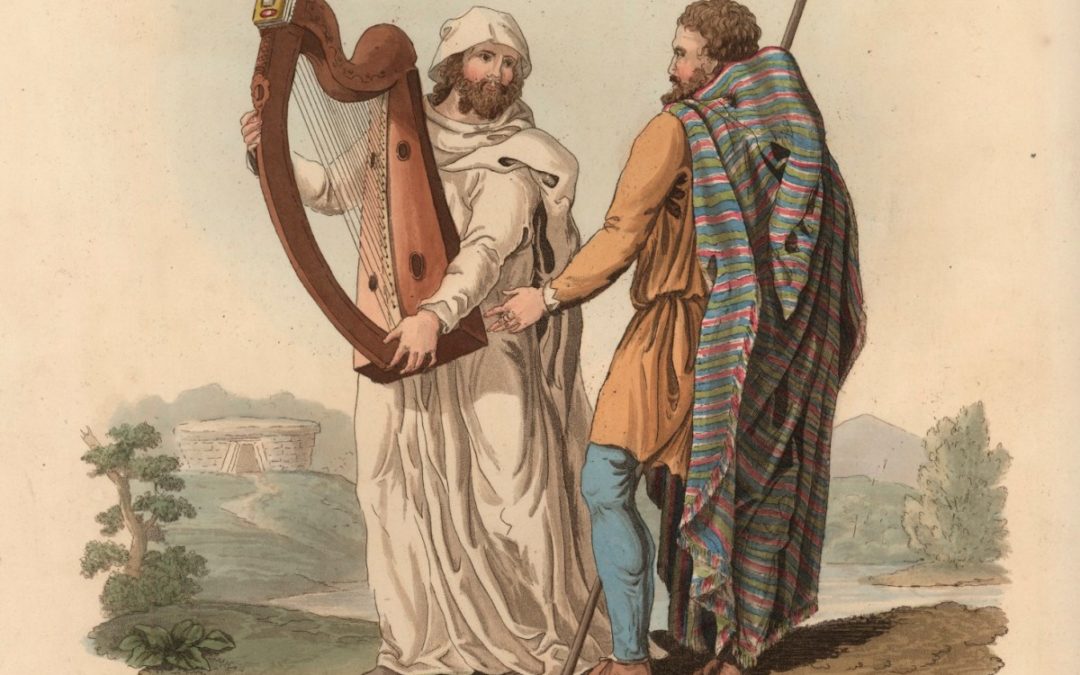
by Moe | Oct 13, 2019 | History of the Brotherhood, Irish History, Latest Media
oIt is the unanimous testimony of almost all Irish Historians, that the Tuath-de-Danaans (Tribe of Dan) were learned, and well skilled in Science and Magic. For many hundreds of years thereafter, Ireland became celebrated as the main center for learning and the export and import of a group of wise men known in the Old Gaelic language as the Ollam (Ollamh, Ollave, Olaf) and to their Brethren of the East, the Ulam.
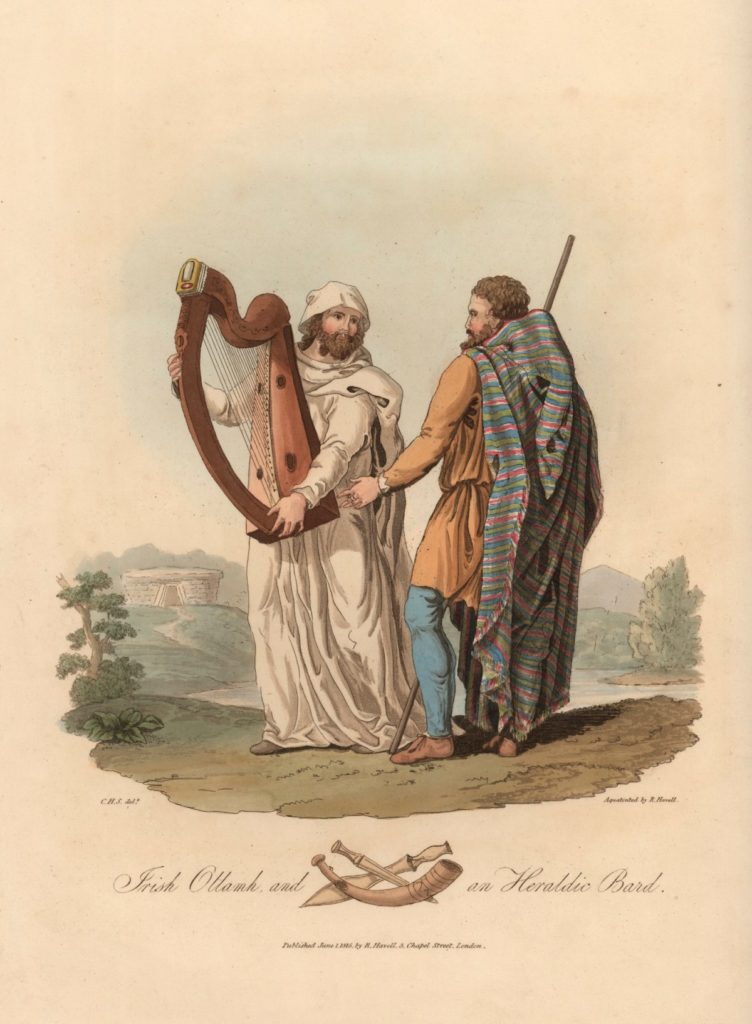
This history is so widely attested that it must be taken as an unquestionable fact, because it is recorded by all Historians of the Celtic race. The many stories of their sagas and exploits are told throughout all early Irish literature for they were its creators.
It is from these words that we learn long before the Christian era, the Ollam of the Irish and Scottish nations were some of the most powerful people who ruled from the Hills of Tara for well over 1500 years or more. Their legal counsels and judges could issue edicts that could make or dethrone a king in a day and thus were endowed with a distinction equal to that of the king.
The Supreme Ollam sat next to the king at the table where he was privileged to wear the same number of colors in his clothes as the king and queen, while all other ranks whether warriors or fellow Ollam had fewer colors. You will find that from the most remote periods of early history in the Irish annals to modern times that we can trace a succession of the Ollam who were honored on a level of noble kings and warriors.
Today we see this tradition of colors identifying rank carried on mainly in Catholicism and the military. Also, to this day in Ireland, an ollam or ollamh means as it did then “a doctor, professor and or scholar of any kind of learning.” In other countries around the globe such as in the Islamic countries, these learned me are known as the Ulam of Mulah.
The Ollams power was derived from their extensive knowledge that in ancient times past was always hereditarily passed down to them which included all types of sciences, literature, religion, history, laws, heraldry, genealogy, logic, reasoning and even magic, to name a few. Their schools became the most celebrated in the Western world under the name of Mur-ollam-hara (MurOllam-han), meaning the “College of the Learned or the College of Doctors.” (Four Masters, p. 293. – vide O Halloran, Book iv., chap. 1, p. 132).
Like their Eastern Ulam ancestors, the professions of the Irish Ollam, whether it be poetry, art, history, building, law and even propaganda, had invariably run in families, so that members of the same household often devoted themselves for many generations to their particular craft.
I believe it was from thousands of years of training and specializations passed down in families that today we see many gifted people who seem born to do specific jobs whether they are world-class scientists, religious scholars, builders, lawyers, judges, poets, singers, and leaders, to name a few.
These various classes of Ollams had produced people who were specialized in their trades and were thus segmented and paid on these abilities. For example, the Book of Rights states that a king kept in his household an Ollam of each profession, who was well paid for his services. The literary Ollam from forbidden from sharing his work with the lower class people and only with kings and chiefs and with their guests.
For the meaning of the word, nobility is “able to know.”
Poets were charged with entertaining the lower grades to attend a lower class of people. The prices for the compositions of the several grades of poets may be seen in the “Small Primer,” Br. Laws, v., pp. 57-71.
A an Ollam “He was also supposed to know the prerogatives, rights, duties, restrictions, tributes, of the king of Ireland, and of the provincial kings and the poet or the learned “historian” who does not “know the prerogatives and the prohibitions of these “kings is not entitled to visitation or to sale” [of his compositions].
It was also said that the Ollam was expected, if asked, to repeat the whole statement from memory, “so that he can recite them all at each noble meeting.”t As a learned man he was expected to answer reasonable questions, and explain difficulties;
“He is great to expound, and he expounds and solves questions”—says Cormac’s Glossary (127, “Ollamh”).
SONS OF THE IRISH OLAM
In the ancient mythologies of Ireland listing “the most famous and noble persons of the Tuatha De Danann,” we find “the six sons of Delbaeth, of Ogma, namely, Fiacadh, Ollamh, Indaei, Brian, Iuchar, and Iucharba.”
The Pictish Chronicles more accurately listing the genealogies which can coincide with science informs us that they were from Ollamhan, from whence comes Mur Ollamhan at Tara or Teamhair (Hill of Tara), to Fiacha, son of Baedan, who fettered the hostages of Erin and Alban.
It was from the Clan Baedan (Son of Dan) who became the de facto father of the senior line of the Hy-Niall kings (King of Ireland and Scotland) because he was the great-grandson of Niall of the Hostages and his grandmother was Scottish Princess of Dalriada named Erca which united the two ancient kingdoms of Scotland and Ireland into one.
We learn that from him the feast of Teamhair (Hill of Tara) was first instituted at Mur Ollamhan. Then, after naming his six successors, the legend adds, “These then are the seven kings that ruled over Erin of the Cruithnigh of Alban.”
You will find these same seven kings are also placed on a list of the mythic pagan kings of Ireland with the first being Olam Fodla is described as “a prince of the most comprehensive knowledge, that ever sat on the Irish Throne is credited with erasing all falsehoods—and he punished severely all historians who made improper representations” (Keating, vol. 1, p. 197).
Ollamh Fodla who is also attributed to one of the most important tasks which is the tribal organization of his people; for according to the Annals of the Four Masters, ‘it was he also that appointed a Toisech over every Triocha Ceud or barony, and a Bruighigh over every Baile or township, who were all to serve the king of Erin.”
It was from these ancient clans of Ireland where we find the professions of some of the most famous Ollams in history who were instructed to teach their own children, and kinsmen, to always be their successors and then with the advent of the New Testament (New Law) for the global Gentiles – they were instructed as it were to “Go ye and teach all nations.”
It was from these families and the schools of the Olam in Ireland which gave rise to some of the most famous Saints of the early Church such as Saints Columba and Patrick whose disciples became masters in the Christian religion. Their Great Work for bringing law, order and learning around the globe to their English, German, and French Brethren that in the years following their deaths, Ireland was termed Sanctorum Patria, or the Saints’ Country.
Author Charles O’Connor, eloquently explains their missionary efforts in his “Dissertation on the History of Ireland,”:
“The monks set up schools, in which they educated the youth, not only of the island but of the neighboring nations. They sent their missionaries in shoals into the continent, converting its heathen and confirming its Christian inhabitants; set up schools in those parts; and laid the foundations of the most flourishing universities in Europe.
They taught the Saxons and Normans the use of letters, and they converted the Cruthneans or Picts to Christianity by the preaching of Columbkille, who quitted his right of succession to the throne of Ireland, to reign over the hearts of a foreign people, enemies to his own nation.”
This family line had produced several of the most well known Gnostic luminaries in the early Celtic Church. In the course of history, that had gone by the name of Baedan or Baithen, son of Brendan, and were the legal successors of Saint Columba as Abbot of Iona.
It was at this time that Saint Columba had declared “Power by Baedan of the yellow hair will be borne from Ireland on him [the steed].”
0 God, wilt thou not drive off the fog, which envelopes our number,
The host which has deprived us of our livelihood,
The host which proceeds around the cams’!
He is a son of storm who betrays us.
My Druid,—he will not refuse me,—is the Son of God, and may he side with me;
How grandly he bears his course, the steed of Baedan” before the host;
Power by Baedan of the yellow hair will be borne from Ireland on him [the steed].
So we know that Baedan who was Monarch of Ireland jointly with his nephew, Eochaidh, in the year 566 after he became the immediate successor of Saint Columba in the 6th century.
It is said that he ruled Iona for only three years, but had left his 12 sons to take his place upon his death in which the Irish Annals record the death of Baedan MacCoirill, King of Ulster, and a naval expedition in the year 598. St. Adamnan, in recording the death of St. Columba, tells us that the dying words of the Apostle of Iona, as he was transcribing Psalm 53, were: “I must stop here, let Baithéne write what follows”.
Baithéne had been looked on as the most likely successor of St. Columba, and so it happened that on the death of that great apostle, in 596, the monks unanimously confirmed the choice of their founder. Baithéne was in high esteem as a wise counselor, and his advice was sought by many Irish saints, including Saint Fintan Munnu ofTaghmon. Abbey St Bathans in Berwickshire (southeast Scotland) may be named after him.
Here is a shortlist of some of the Saints of Iona from the House of Baedan (Baothin) who took the name of Beadan (Baothin):
* Baedan, son of Muircheartach, joint-king of Ireland, 555, 562, 563.
* Baedan, son of Ninnidh, son of Fearghus Ceannf hoda, slain, 567.
* Baothin – Son of Brendan and the founder of the House of Baedan. – He was also known by the various spellings such as Baedan, Buadan, Baithen called Baitan Mor. He was the legal successor of Saint Columba, died, 595.
* Baedan Mac-Ua-Cormaic, abbot of Cluain-micNois, died, 663.
* Baedan, abbot of Beannchair, died, 665.
* Baedan, bishop of Inis-Bo-finne, died, 711.
* Baedan, of Cluain-tuaisceirt, died, 804.
* Baedan, abbot of Birra, died, 926.
It was from the family of Badan that naturally produced several generations of learned and professional men known as the Ollam who were on a level, and social rank, with the chieftain grades. From this clan, I believe that there would be numerous other families who were either cousins or allies who would be given royal titles for their Great Work.
I believe that many of these Ollam clans would be legally signified by simply adding an O’ to the beginning of their names which is something we see only used in ancient Ireland and also the appeleation of Mac would be used meaning “Great of Chief” for the “Chieftan” families of the Ollams.
Ollam Clans who were the most distinguished amongst the professor castes are listed in The History of Ireland from the Earliest Period by Geoffrey Keating who had written;
“The most distinguished amongst the professor castes were, in Ulster, the O’Cleries, O’Gnives, the O’Slevins, O’Husseys, O’Donnellies, O’Dalies, O’Mulligans, O’Farrellies and O’Curneens; in Connaught and Meath, the O’Maelconaries, Mulconries, or Conries, the MacFirbisses, the O’Duigenans, the O’Dugans, the O’Higgins, and O’Coffees.
The O’Dunns and MacKeoghs, were the chief bards of Leinster; the MacGraths, the O’Dineens, the MacBruodins or Brodies, the MacCurtins, and MacGowans, and some of the O’Keefes, in Munster. The O’Dalies were found distinguished as poets in all parts of Ireland.
“In music the ancient Irish were highly celebrated. It is stated in the Chronicle of IIanmer, p. 197, that in the latter end of the eleventh century, about A. D 1098, Griffith ap Conan, Prince of Wales, who had resided a long time in Ireland, brought over with him, to Wales, “divers cunning musicians, who devised in manner all the instrumental music upon the harp and crowth that is there used, and made laws of minstrelsy to retain the musicians in due order.’
Thus it appears that the famous Welsh bards were indebted for their knowledge of the harp chiefly to the Irish. The Irish in former ages were the most famous harpers in Europe, and continued eminent in the art down to modern times.” Turlough O’Carrolan, our last very eminent harper and composer, died in the year 1738.”
There were various specialties and names for the professions of the Ollam. For example, a Doctor of Law was called “Ollamh re Dighe” (dlee); a Doctor of History was styled “Ollamh ré Senchas” and a Ollamh releighes” (ollave re lyas) meant medical doctor. (The History of Ireland from the Earliest Period to the English Invasion By Geoffrey Keating)
Some of the most eminent of Ollam would become tutors to kings and also be the founders of various Mur-ollam-hara (MurOllam-han) schools around the world in which they set up a barony, and a bruighean (brugh, brughaidh, breean or breen) over every Baile or township from which they had settled.
This old Irish word bruighean (bru, brugh, brughaidh, breeoge, breean or breen) appears to mean “royal house or royal mansion” and was used to signify the royal house and place of their barony (barune) or government.
This word Bruighean occurs in the Feast of Dunnangedh in relation to pillars and the old Tribes “that his progeny should still have the legitimate possession of Tara with its supporting families, and the old Tribes of Meath perpetually and forever.”
We find several place names for various Irish townlands located in Antrim, Donegal, Tyrone, Limerick, and in Tipperary. For example, the town Breenaun in the parish of Ross, Galway; and Breenagh in the parish of Conwal, Donegal, and Breeoge, in the parish of Kilmacowen—Bruigheog.
THE IRISH SONS OF OLAM ATTACKED FOR THEIR GNOSIS
In Moore’s History of Ireland, we learn that in the year 812, the Danes burned the abbey of Derry, and massacred the clergy and students and their schools and sacred edifices of Armagh were burned in the ninth century, but the disaster was soon overcome.”
Eminent scholars from abroad are found visiting Armagh in the next century, and during the interval of its misfortunes education throve at Clonmacnois, Devenish, and Kildare. The annals of Munster record that, in the year 812, the Danes burned the abbey of Derry, and massacred the clergy and students. Probus, author of a life of St. Patrick, in two books, was chief lecturer of the school of Slane, and met his death during an attack made by the Danes upon the church, in the year 950. Clonmacnois was cruelly pillaged in its turn.
So many eminent Irish Olmam had made such an impact on Continental European royal courts and had gone on to become Catholic Bishops that they excited the jealousy of other scholars in various countries.
In the tenth century, the Irish Olman were denounced by their competitors who launched an ad hominem attacks calling them the “Episcopi Vagantes” and making jealous decrees of different councils such as in Calcuith that went so far as to declare that no Irishmen should be admitted to clerical functions—“et Scoti non admittentur sacra ministrare.”
CONCLUSION
Since the most ancient times, it has been a policy of kings to recognize and promote thier tutors as the most learned men of their kingdoms by bestowing upon them royal dignities of honor and trust in their court.
For example, we find this tradition in Ancient Greece when in 343 B.C., King Philip II hired the philosopher Aristotle to tutor Alexander the Great philosophy, poetry, drama, science, and politics over the course of only three years. We find this also in the Old Celtic storied like in the relationship between King Arthur and his tutor Merlin.
The general tendency to honor the Ollam in history I believe stems from the fact that without their Great Work, most of history and the eternal wisdom would be lost. For we know the kings managed the kingdom while the warrirors defended it and the Ollam were in charge of all knowledge and controlling it as well for it is well known that “knowledge equates to power.”
The Irish Helicon records the legends of the royal road to the Ollams great Gnostic learning.
We learn that King Cormac Mac Art was wandering through Tir (Tyre) Tairngire or Fairyland, when he saw beside the rampart of a royal dun or palace a shining fountain with five streams issuing from it, making a murmur more melodious than any mortal music.
There were five salmon (s-olman) swimming about in the well: and on the margin grew nine hazels which often dropped purple (Phoenician) nuts into the water. The moment a nut fell, one of the salmon caught it, and rejecting the husk, ate the kernel.
As Cormac looked on, he saw many people coming to the well in turn and drinking. And when he inquired the meaning of these strange sights, he was told that this was the “Fountain of Knowledge (Gnosis)”; that the five streams were the five senses, through which knowledge is obtained; and that those who drank were at once endowed with great knowledge, so that they were thenceforward called;
“People of many arts and sciences” {Lucht na n-ilda1i).”
Moe is the founder of GnosticWarrior.com. He is a father, husband, author, martial arts black belt, and an expert in Gnosticism, the occult, and esotericism.
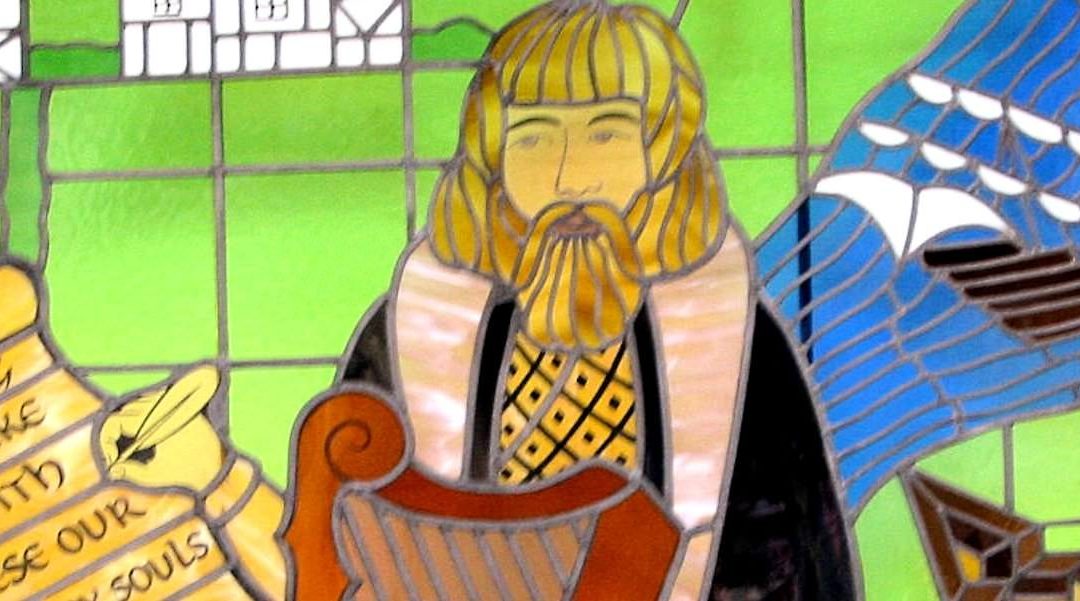
by Moe | Oct 7, 2019 | History of the Brotherhood, Irish History, Latest Media
“The native rulers fled abroad in the episode known as the Flight of the Earls but, as with all the major Irish kingships, the line of descent continues into the present day.”
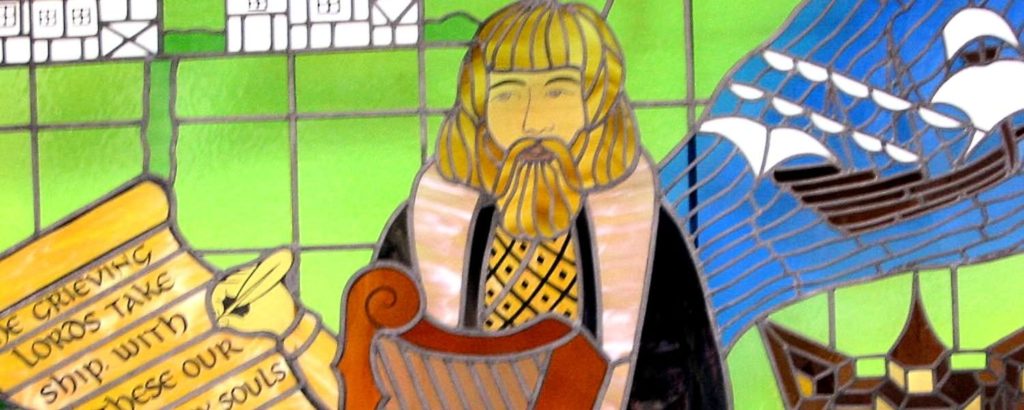
One of the oldest and most important kingdoms of Ancient Europe had originated in the Northern lands of Gaelic Ireland in a place that I would like to call the “New Tyre of the West.” It is from here where we can find the lost Tribe of Dan who is called in the Ancient Irish Annals the “Tuatha-da-Danaans.”
A tribe, people, and place who I believe along with the Tribe of Judah that one day may be credited with helping lay the cornerstone down for the foundation of Ireland and many other countries which spawned shortly thereafter.
The lost history of the Irish Tyranians who I believe is connected to the Biblical “Tribe of Dan” can be found secretly encoded into their long illustrious history, the geography of the region, and the hardships and success they have both endured and earned through countless centuries of fighting for God’s kingdom.
Today, we know of this location of the Irish Tyranians with their tribe the Tuatha-da-Danans in the province of Tyrconnell, also spelled Tirconnell, in the present-day County Donegal. Anciently, I have found that it was also spelled Tyr II, Tyrol, and or Tyrone.
ETYMOLOGY OF TYR-CONN-ELL
Before I delve into this fascinating history, it is important that I first quickly explain the etymology of the name Tyrconnell and also the County Donegal.
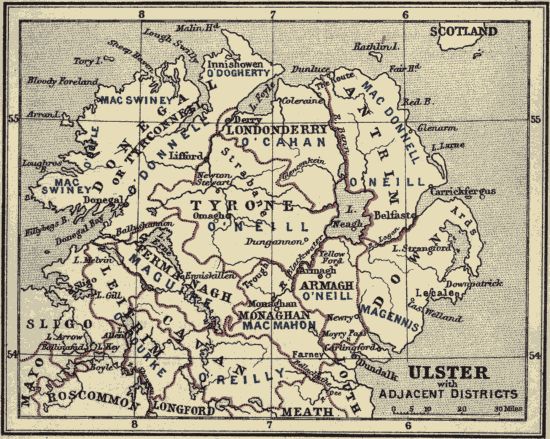
Tyrconnell is a compound word containing the words “Tyr, conn, and ell.”
In a previous article, Tyre-Egypt: God’s Ancient Stone Masons of the Tora, I had went over the etymology of Tyre where I show that it is derived for the old words in many different languages for rock, stone, and or mountain which was anciently called “Tur, Tsur, Tzor, Tor, Tora, Toorah, Tura, Tyr, Tir etc.”
I had also shown that the Phoenician Tyranians were world-traveling Master Masons who were the hereditary descendants of King Hiram in search of the Tyr Limestone. They were also world-famous throughout history to be the best shipbuilders, navigators, and businessmen who had a long tradition of naming their new settlements in a new language that can be proved had spawned from their Phoenician ports and alphabets which they took with them from the East.
After careful analyzation of their history, this proves to me that this was their simple secret formula for not only the birth of successful nation-states but also the legal identification of their landholdings ie: real estate titles.
They seem to follow the same exact Babylonian plan wherever they would venture around the globe as we find in Northern Ireland such as in Donegal County and Ulster where they governed. I would assume that if you are an ancient military and city planner for Tyre that they would both incorporate and honor the necessary ingredients for city planning from their ancestors which included cornerstones brought from their ancestral lands, language, names, laws, religion, and their main method of domination, commerce.
Their main military goal where they traveled was to find and seize all territory along a country’s largest waterways, rivers, and lakes for unlimited freshwater, agriculture and also the safest seaport for travel, commerce, exports, and imports.
In this areal photo of Northern Ireland, we can clearly see that any tribe that ruled from Donegal and Ulster controlled the largest waterways, ports, and from North Coast, they could easily deploy to Scotland and rule these lands with their boats and armies.
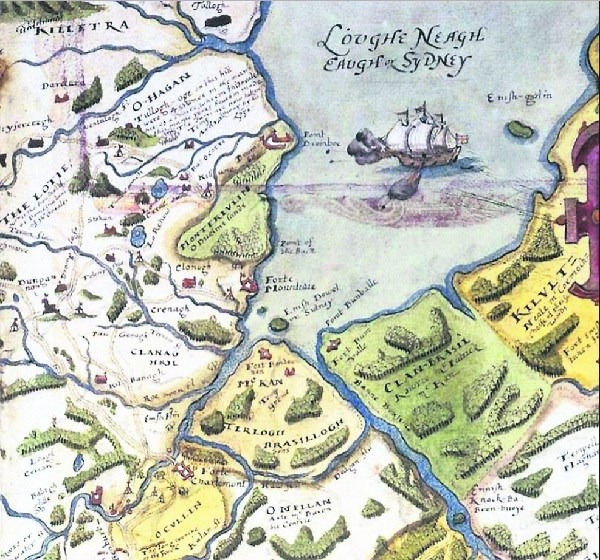
Not surprisingly, it was in these precise locations where they would not only find their prized white limestone (AKA – Tyr, Tir, Tur, Tor) for their immortal Masonic endeavors, but they would also be able to gain control of entire countries and sometimes multiple countries. Once they would become established, they would rule these lands through commerce, laws, religion, myths, and education which they created this system of conquering a native people’s mind, body, and soul which all coincide with one another.
Hence, what worked in Tyre, Egypt and even better in Tyre, Crete would also work wherever they would travel such as this new successful colony in what could be called the third Tyre – Tyrconnell, Ireland. They would also use place names to designate their specific domain (dan-ain), a compound word derived from dan-ain for the Tribe of Dan
This same military methodology that endures the test of time to this very day.
The meaning of the next word in Tyr-conn-ell is ‘conn or con’ which means ‘with’ and is related to the Gaelic ‘comh’ – a prefix denoting “with, com or con.”
Not surprisingly and as I have witnessed as a global fact, these Irish Masonic Builders of Solomon’s Temple from ancient Tyre had added the old name for God onto their name which is the Phoenician and Hebrew El also spelled ul,il, or al and can be variously translated as “God, Lord and or Governor”
With that said, the meaning of Tyrconnell is “Stone-Rock of God or “God’s Stone Masons.”
ETYMOLOGY OF DONEGAL COUNTY
As I mentioned above, the men of Tyre had honored their ancestor’s several ways and I have found that the main method by which they did so was the naming of geographic locations that they controlled like the city of Tyrconnell in their county which they named ‘Donegal.’
In this compound word of Donegal which is composed of the words “don or dan” and the word egal”, we can find the name of the lost Tribe of Dan who is called the “Tuatha-da-Danans” officially encoded into North Irelands ancient history.
The meaning of the Gaelic name Don is also Dan in English was applied to their territory Donegal in order to honor their Tribe of Dan. Since ancient times, the name Dan, Don and or Dom was a title of respect given in Ireland, Scotland, and England to learned or clever men.
For example, in the Lowland Scotch language, a Dominie was a “schoolmaster” and in Latin, a Dominus is a lord, a master and where we get the word dominate, to rule, and dominion, lordship, mastery, rule. Likewise, in Spanish, a Don is a title that is equivalent to “Sir or Master.”
This was the same title of Dom for the original Catholic Benedictine Priesthood which was first only applied to monks, but afterward was extended to persons of all respectable professions.
The next word in Donegal is ‘egal’ which simply means “equal or equal to”.
Therefore, we can say that the territory of Danites was the County Donegal which means the “County or Province Equal to Dan.” I believe this could be in reference to the “Western Branch” in which they being now masters of both Ireland and Scotland were equal in the West to their Eastern Brethren of the Tribe of Dan.
GEOGRAPHICAL SCIENCE SETS THEE WAYMARKS OF DAN
We find that the Tribe of Dan has Set thee waymarks in the places which were named after them meaning Dan’s resting place. This geography corresponds to ancient Irish history which says that in approximately 585, B. C, a ship landed at Ulster, Ireland, which was manned by the “Tuatha-da-Danans” (Tribe of Dan).
According to the annals, amongst their cargo on their voyage to Ireland they were in possession of a large oblong stone in which after their vessel had been temporarily disabled on the coast of Spain, during which the King of Spain attempted to obtain possession of the stone, but the king failed and the guardians of the stone, the Tuatha-da-Danans made it out of Spain to land on the beautiful coast of Northern Ireland.
In Ptolemy’s map of Ireland, we find Dan’s- Lough, Dan-Sowar, Dan-Sobairse, Dan’s resting place, and Dan’s habitation, and Dan-gan Castle (the birth-place of the Duke of Wellington).
Irish Historian, Thomas Moore had written that the Tuatha de Danaan (Tribe of Dana), “after sojourning for some time in Greece… proceeded from thence to Denmark and Norway”.
Author Geoffrey Keating (ca.1570 1646)had said that the Danaans were a people of great learning and wealth; they left Greece after a battle with the Assyrians and went to Ireland; and also to Danmark, and called it “DAN-mares”, “Dan’s country.”
According to The Essential Teachings of Herbert W. Armstrong, the Tribe of Dan left their serpent waymarks at “Danslaugh,” “Dansower,” “Dundalke,” “Dundrum,” “Donegal Bay,” “Donegal City,” “Dunglow,” “Londonderry,” and ” Dingle,”
THE IRISH OLLAMS SAME AS SONS OF ULAM ALL OVER THE WORLD
It was said in the Irish Annals that among the passengers of the Danans was a princess of remarkable beauty named Tephi who was accompanied by her guardian, afterward known by the name Ollam Fola. In my previous article, I explain that King Ollamh (Ollam) Fodhla was known as the great lawgiver and patron of learning to early Ireland.
To this day in Ireland as it did then, an ollam or ollamh means “a doctor, professor and or scholar of any kind of learning.” In other countries around the world such as in the Islamic nation, these learned me are known as the Ulam of Mulah.
King Ollam is mentioned in the “Annals of the Four Masters,” p. 412, as a sage and law-giver. He was said to have founded a College of Ollams at Tara, or a ‘School of the Prophets.” There was actually a famous college at Tara called the Mur Ollam han, or the House of the Learned. Four Masters, p. 293.
“Besides all these reforms the great legislator founded a University at Tara, which, for rank and dignity, preceded all others of the kingdom, and which he called MurOllam-han, or the College of Doctors (vide O Halloran, Book iv., chap. 1, p. 132), which, since we have discovered the word to mean “Revealers,” would stand for the School of Revealers.
Ollam Fola ordered the sacred records to be kept at Tara. “These form the basis of ancient Irish history.” (Annals of the Four Masters, note p. 297.) Ollam Fola was called the “Chroni. cle’” (vide Moore, i, 114.)
The name we find in Ancient Irish history as Ollamh (Ollam) we can also connect Biblically to the Sons of Ulam who Bedan, meaning Son of Dan can also align to ancient Irish history.
Another passenger on the boat mentioned in the Irish annals that were associated with Tuatha-da-Danans was a man named Simon Baruch who we can identify as part of the global Sons of Ulam or in Gaelic – Ollamh (Ollam) who have been tasked to bring this knowledge to the world.
This man Simon I will discuss in a future article in which I will detail the fascinating history of the Irish Sons of Ulam of whom I believe one of the most famous is Saint Columba or Co-ulum-ba who was once a Supreme Ulam of Ireland.
THE TYRE MASONS OF TARA IRELAND
We learn that from Irish mythology that when the Tuatha-da-Danans landed in Ireland, they were newcomers and there was already a ruling king whose castle in Meath, was changed from Lothair Grofinn to Tara.
It is said that Princess Tephi upon her death was buried here in a sepulcher that is covered by a mound of earth 60 feet square whose remains are intact to this day and is called “Tara or The Hill of Tara.”
The Hill of Tara is an ancient ceremonial and burial site near Skryne in County Meath, Ireland. According to ancient tradition, it was the inauguration place and seat of the High Kings of Ireland.
Here is an ancient depiction of the topography of this area.
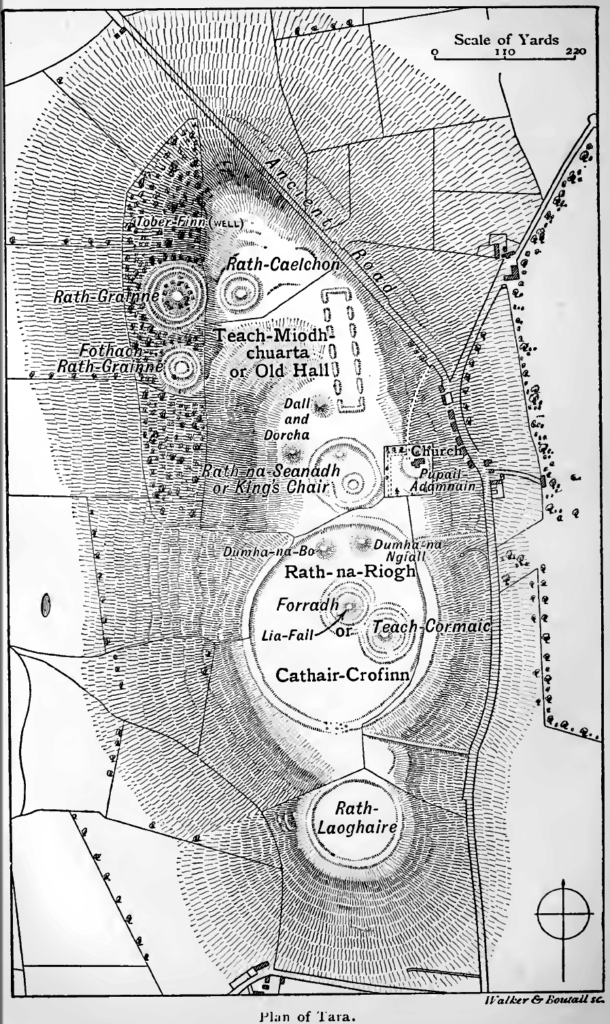
It is here in Tara, where you will discover the ancient remnants of the Masons of the Tyranian Irish who left numerous limestone monuments and earthworks — including burial mounds, round enclosures, the “Mound of the Hostages”, and a standing stone that some believe to be the “Stone of Destiny” (Lia Fáil).
There is also a church and graveyard on the hill.
Modern-day Tara is part of a larger ancient landscape and Tara itself is a protected national monument under the care of The Office of Public Works, an agency of the Irish Government.
To reiterate from past research, the name Tara comes from the words “tor, tur, tyr, tir, tora, torah, tura etc.” which all mean “stone or rock and later also to mean “mountain, chief, Lord, God, and or prince for their descendants.”
I believe these precise locations were known well over 2,000 years ago and were shown on Ptolemy’s ancient map of Ireland.
In Isa. 66-19 we read, and I will set a sign among them, and I will send those that escaped of them unto the nations, etc., to Tarshish and the Isles afar off. On an Ancient map of Ptolemy’s, England and Scotland are named Javan, and Spain, Portugal, and France are frequently mentioned as Tarshish, the ships of Tarshish, etc.
Ulam’s son, Bedan whose history and name we can bridge with the Tuatha-da-Danans and their Irish High King Baedan which means “Son of Dan” (King Tech- Baoithin, Baithen, Baithin, Baithan, Baetin, Baitan Mor, Báetán mac Muirchertaig, “Baithen the Great”.)
This King Baedan became the father of the senior line of the Hy-Niall kings (King of Ireland and Scotland) because he was the great-grandson of Niall of the Hostages and his grandmother was Scottish Princess of Dalriada named Erca which united the two ancient kingdoms of Scotland and Ireland into one.
The Pictish Chronicles informs us that they were from Ollamhan, whence comes Mur Ollamhan at Tara, to Fiacha, son of Baedan,” who fettered the hostages of Erin and Alba. Also, seven kings of the Alban Cruithnech governed Erin (Ireland and Scotland) at Tara.
For example, Of this king’s descendants, we see the name Olma encoded into their sirnames such as his son Colmán Rímid and Maeluma.
KING MILESIUS OF IRELAND THE SAME AS KING MILESIUS OF CRETE
As I mentioned above, in the tradition of honoring their mariner ancestors, they would rename these new lands they had conquered and even the characters in their myths and also importing the very language, laws, and history in the very boats that carried them.
This is where we meet with more of their ancient mythology encoded into the Irish Annals, which include volumes called the Annals of Ulster, the Annals of the Four Masters, etc.
A major clue to the original homeland of these people comes from the old Irish folklore which states that they arrived in Ireland with an expeditionary force from anywhere between the 17th to the 6th centuries B.C. They are said to have spawned from the fifth son of King Milesius who was the progenitor of the Milesian race and hereditary Father to some of the earliest tribes of Ireland and the noble families of Ulster.
This story of King Milesius in Ireland coincides exactly with the mythology of their homeland which I believe was both in old Tyre (Tora, Tura) Egypt and in new Tyre on the Holy Island of Crete.
The ancient homelands of their ancestors.
In researching the most remote mythology on this King Milesius, we will discover that the oldest reference takes us directly to the ancient mythology of Crete where we find it was King Melissus who first introduced sacrifice to the Gods, and introduced new rights and sacred ceremonies on this island.
He had two daughters Amalthea and Melissa, which nursed the child Jupiter, and fed him with goat’s milk and honey. Melisseus was the eldest and leader of the nine Curetes (Kuretes) of Crete. The meaning of the name Melisseus is “bee-man,”and another form of Melissus, in Cretan means, “honey-man.”
CURETES & CABIRI OF CRETE SAME AS CABIRI & DRUIDS OF IRELAND
According to Diodorus Siculus, the Curetes lived in the time of Rhea; The Father of History, Herodotus and Strabo writing later both had said that the Curetes were originally Phoenicians who accompanied Cadmus out of Phoenicia.
The ancient Curetes (Kuretes) of Crete I have written extensively about these various connections in history with the Priesthood of Zeus who were also known by many other names such as the Telchnines (Telknines, Telkhis, Telegonus, or Greek, Τελχῖνες), Corybantes, Dactyls, and Cabiri.
These same Priesthoods with their same history and myths bring us to another connection to Ancient Ireland that would be hard to refute which is through the history of a well-known but mysterious Priesthood called the Druids.
For example, both the Cretans and Egyptians had a priesthood that was called the Cabiri and so did the ancient Irish.
In a previous article, The Irish Druid Cabiri Are the Same As the Phoenician Cabiri, I explained that you will find that the Latin name Cabiri and Old Irish Cabur is derived from the Phoenician Hebrew word Kabir that is sometimes spelled Cabir, Chabir, Chabiru, and Chabireh. Cabur was once of the ancient God of Ireland being that of the ancient Irish pantheon of Gods known as Axire, Axcearas, Coismaol, and Cabur.
The priests of this God were called the Druid Caburi or Cabiri.
According to the ancient Phoenician historian, Sanchoniatho, the mysteries of the Cabiri were first celebrated by the Phoenicians, and introduced into Greece. He had written that first or original Cabiri were the eight Sons of Sydyc, who was a Canaanite.
They lived in the Days of Taaut of Thoth who is the same as the Phoenician Hermes. Pausanias, the Greek historian and geographer who lived in the time of his cousin, the Roman Emperor Hadrian, relates, that the Mother of the Gods was anciently worshiped at Thebes with the Cabiri, whose Names and Mysteries he durst not divulge.
THE FALL OF THE IRISH TYRE
The kingdom of Tyrconnell represented the core homeland of the Tribe of Dan who became known in the Irish Annals as the Tuatha-da-Danans with various families and subunits of families whose the most successful under the banners of the Ulaid, Northern Uí Néill, Niall of the Nine Hostages, and Ulster all vying for power.
The chief seat of the ancient royal Irish families was sacked and ceased several times by English forces in their attempts to reduce the country to obedience to the royal authority. However, the warrior spirit of the Irish branches of the Tuatha-da-Danans proved to be a formidable fight to the invading English until the close of the reign of Elizabeth, when it would become the location of fighting during what was called Tyrone’s Rebellion at the end of the 15th Century.
It was said to be burned by Hugh O’Neill, earl of Tyrone, to prevent its falling into the hands of the queen’s forces in Ireland.
Their power continued to exist until the 17th century when before the English invaded their lands, the ancient native rulers of Ireland fled to the North and abroad in the episode known as the Flight of the Earls. It was then finally incorporated into the English-ruled Kingdom of Ireland.
But, as with all the major Irish kingships, the line of hereditary descent continues into the present day.
LEGAL BANNERS FOR THE WARRIORS OF GOD AND THE KING
In researching the Ancient History of Ireland, you will find that it was here that the first laws and legal system of the Western World was developed in the reign of Ollamh Fodhla who I have mentioned were the learned men who ruled over their people. This legal system was known as the Brehon Law which operated late into the 17th century and was abolished and later became the English common law system. After the English had conquered these lands in the time of Elizabeth I, the Brehon laws were considered to be old, lewd, and unreasonable.
However, one of the most important legal ordinances of Brehon Law was for Tribal Heraldry where their tribal insignias bearing various symbols and colors would identify their rank. It is my understanding that before this time in the West, tribal and royal heraldry was not governed by a legal assembly such as the Ollamh Fodhla.
The various Celtic Tribes who jostled for control of Ireland were distinguished by particular symbols and colors each class of society was to wear in their clothes were specially regulated by Brehon Law.
Servants wore clothes with one color and one step up was a rent-paying farmer who wore two colors. Military officers wore three colors and their chiefs wore five colors. The highest members of society being the ollamhs and poets wore six colors in the clothes and seven colors in the clothes of kings and queens.
This system of royal authority was left to the family and tribe to be in charge of their own heraldry and royal rankings which would leave this legal loophole open to corruption and fraud. In researching the royal families of the world and priesthood over the last 2,500 years, I would say with confidence that this fraud has most likely happened quite often. Especially under the English Common Law System.
The Rev. Geoffrey Keating, in his “General History of Ireland,” explains that in the reign of Ollamh Fodhla, in a “great triennial assembly at Tara, it was ordained by a law that every nobleman and great officer should, by the learned heralds, have a particular coat-of-arms assigned to him according to his merit and his quality, whereby he should be distinguished from others of the same rank, and be known wherever he appeared.”
An ancient historical account of the battle of “Magh Rath,” that was compiled from ancient manuscripts of Finn Mac Gorman, Bishop of Kildare and later transcribed by John O’Donovan from the Book of Leinster shows us exactly the names, symbols, and colors of some of these families.
Finn Mac Gorman was Bishop of Kildare in the first half of the twelfth century and died in the year 1160. Here is Mac Gorman account of the various Tribal Banners which was published in 1842 by the Irish Archaeological Society (p. 227, see also p. 847):—
“Mightily advance the battalions of Congal
To us over the ford of Ornamh;
When they came to the contest of the men
They require not to be harangued.
The token of the great warrior of Macha—
Variegated satin on warlike poles;
The banner of each bright king with prosperity
Over his own head conspicuously displayed.
The banner of Scannlan—an ornament with prosperity,
And of Fiachna Mor, the son of Baedan,
Great symbol of plunder floating from its staff
Is over the head of Congal advancing towards us.
A yellow Lion on green satin,
The insignia of the Craebh Ruadh,
Such as the noble Conchobar bore,
Is now held up by Congal.
The standards of the sons of Eochaidh
In front of the embattled hosts,
Are dun-coloured standards like fire.
Over the well-shaped spear-handles of Crumthann.
The standard of the vigorous king of Britain,
Conan Rod, the royal soldier,
Streaked satin, blue and white,
In folds displayed.”
IRISH TYRE AND THE TRIBE OF DAN FROM IRELAND CONCLUSION
To some people of modernity, this history seems nothing but a mythological fairytale and or legend of days gone by. But to others like me, it is a beautiful homage to the true history of our people and the world in this 6th Age encoded into our Holy Scriptures, nation myths and the laws of our lands of which we are in the year 2019.
The facts of hiostory are well known that the Irish tradition tells us that they are a fighting race, and as it were, “mariners” (Ezek. xxvii. 8) or seafaring men. They have hung their shields on the walls of Tyre (Ezek. xxvii. 10), and being insular, they have been vindicated by true history and their character as the Warriors for God via the Tribe of Dan.
Let it be said that legend informs us that the Tribe of Dan had also brought with them the famous Stone of Destiny, and is also known as the Stone of Scone and The Coronation Stone (Liagh Fail) on which all succeeding kings of that race were crowned. It was used for centuries in the coronation of the monarchs of Scotland, and later the monarchs of England and the Kingdom of Great Britain.
Historically, the artifact was kept at the now-ruined Scone Abbey in Scone, near Perth, Scotland. It is also known as Jacob’s Pillow Stone and the Tanist Stone, and in Scottish Gaelic, clach-na-cinneamhain.
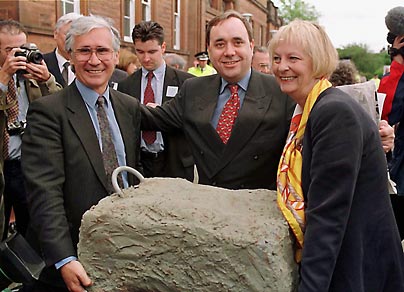
Fergus the Great borrowed the Liagh Fail to be crowned on, after his invasion of North Britain; and, being deposited in the abbey of Scone, it continued there until the reign of Edward I., who had it conveyed to Westminster Abbey, where it is now placed beneath the inauguration chair, having its name changed for that of ‘Jacob’s stone.’
Its value appears to rest upon the destiny contained in a very ancient Scythian or Irish verse, the purport of which is, ‘that where the Stone of Destiny is preserved, there a prince of the Irish race should govern.’
Moe is the founder of GnosticWarrior.com. He is a father, husband, author, martial arts black belt, and an expert in Gnosticism, the occult, and esotericism.
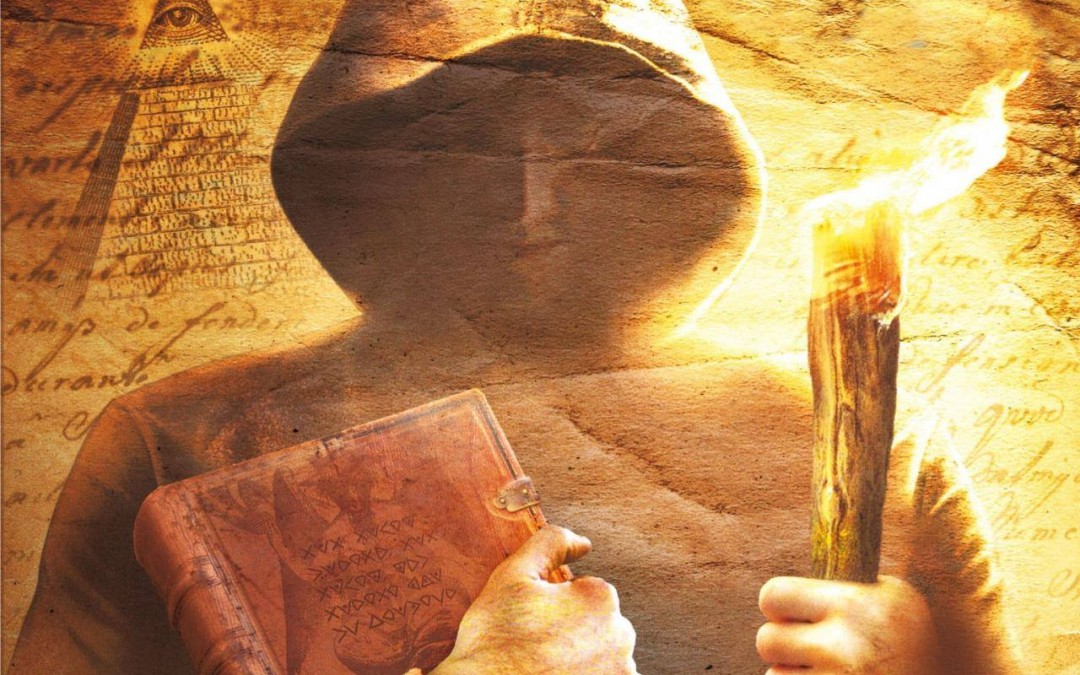
by Moe | Sep 29, 2019 | History of the Brotherhood, Latest Media
In the Scripture, we learn that the ancient warriors for the Lord can trace their knowledge (Gnosis) to Ulam (Olam, Elam, Elyma, Elymai) who is listed as a descendant of Machir of the tribe of Manasseh.
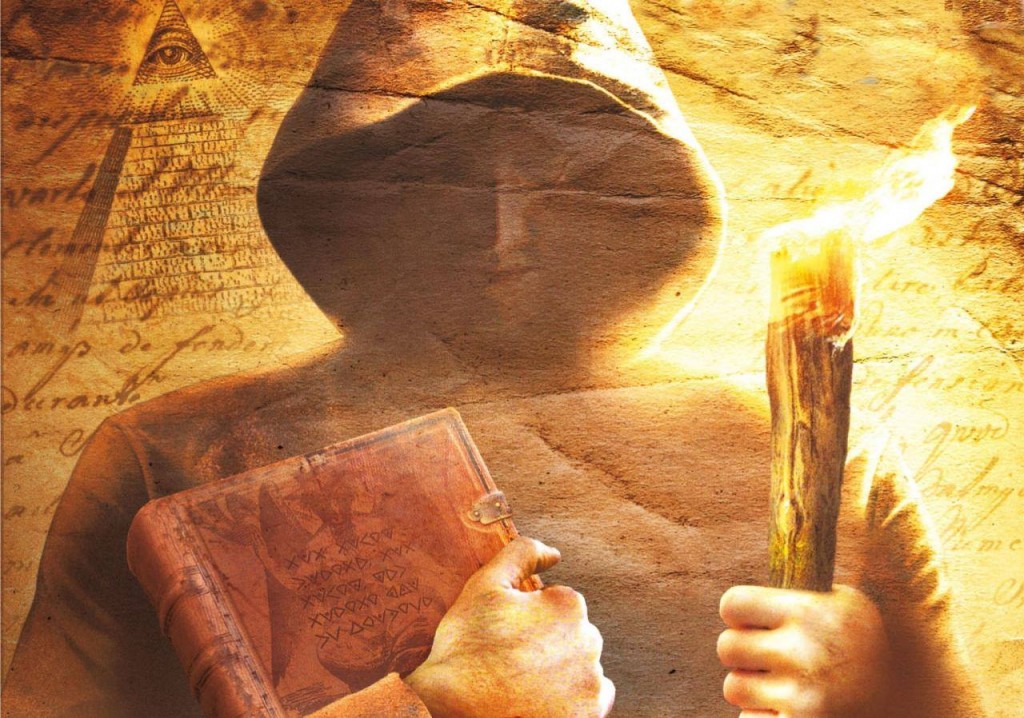
The genealogy of the Tribe of Machir tells us in 1 Chronicles 7:16 – “Maacah the wife of Machir bore a son, and she named him Peresh; and the name of his brother was Sheresh; and his sons were Ulam and Rakem.”
Ulam is listed as the father of Bedan in the Gileadite posterity of Manasseh (1 Chron, vi, 16, 17); and the first-born of Eshek of Benjamin who was among the descendants of King Saul, and the ancestor of one hundred and fifty valiant archers (1 Chron. viii, 39.40).
Hence, the sons of Ulam were men who were mighty warriors, bowmen, having many sons and grandsons who created the “Tribe of Benjamin (Benjaminites).”
The Ancient Sages interpreted the name Bedan as “Ben-Dan” which means the son of Dan and others have identified him with the judge of Revelation known variously as “Abadon, Abidan, Abdon, Adon and or just Bedan.”
For example, in Judaism, the term “Adon Olam” means the “Master of the World,” and is used as one of the names of the “God of this World” who differs from the God on Most High, Yahweh or Jehova.
Since we know Bedan was called a “Son of Dan,” then it makes perfect sense that his father who is named Ulam was also named Dan for he would have to be for his son to be named Bedan.
These names I contend are given in the Scripture as holy sir name or appellation to signify both their rank in the heavenly hierarchy and also concealing their ancient secular (sec-ulum) history from the profane which can be reconciled with etymology, history, and now science (geography, archaeology, and DNA).
With that said, Ulam who was also known as Dan and his sons were the Tribe of Dan in which Bedan was the last and Bedan’s sons became who “were men who were mighty warriors, bowmen, having many sons and grandsons – the “Tribe of Benjamin (Benjaminites).”
However, what they have done is encoded their Holy names into the history books, myths and even geography of our world into just about every known civilized government all over the globe. Whether it be their given holy name or name of their tribe, they left their marks everywhere.
Meaning, my research proves that you will find that the Sons of Ulam and Bedan have most likely played the largest role as the builders of the world we see today in the 6th Age where you will clearly see that their names are connected to the most famous and industrial cities and also to some of the most intelligent (knowledgeable) who have ever lived.
In this article and future pieces, I will attempt to put forth some of this fascinating research documenting this hidden but revealable history of the Sons of Ulam and Bedan.
Please keep in mind as you read this that “It was the tribe of Dan that left the serpent’s trail,” and in following Jeremiah’s instruction to “Set thee up waymarks”.
What I would like to first bring to your attention is the meaning of Ulam as I did with Bedan which means “Son of Dan.”
THE MEANING OF ULAM
The name ‘Ulam or Olam’ is a compound word composed of the words ul (ol, el,il,al) and am (om, on, me).
The meaning of ul (el,il,al) is variously translated as “God, Lord and or Governor” and ‘am’ means “to exist, be alive, having the state, quality, identity, nature, role and or occupy a position in space.”
Therefore, Biblically speaking, we may refer to the Sons of Ulam to have been appointed to their roles and positions by a “God, Lord, King and or Governor.”
In Arabic, Alima (Arabic اليمه) or Ulama means “knowledgeable, wise, and or scholar and today in Islam, the Ulama are placed in charge of all religious, legal, and historical governmental affairs for the kings of the East in their respective countries.
ULAM BECOMES OLAM IN THE OLD TESTAMENT (TORAH, TUR’AH)
The world Ulam is also rendered Olam (Alam) in the Old Testament as a word when used in reference to the Levite priesthood as servants to God and the king in which Olam becomes to mean “eternal (e-tur-nal) or eternity (e-tur-ni-ty).”
My readers who have been following my latest articles will notice that in the word eternal (e-tur-nal) or eternity (e-tur-ni-ty) we have the ancient word tur (ter, tir, tyr) which means “rock, stone or Peter”.
Olam can be found in the Torah, In Psalm xc. 2 we read, “From olam to olam thou art Elohim.” Olam : hidden, veiled, gives Alam: a virgin, one veiled. Jonah was in sheol for olam as he lost count of time, it was veiled from him.
Other Examples of Olam in Judaism;
“Mighty men from olam.” in reference to David’s Mighty Warriors who are a group of 37 men in the Hebrew Bible who fought with King David and are identified in 2 Samuel 23:8–38.
Exod. xxi. 6. “Serve him for olam;” xl. 15. “Priesthood of olam.”
Jer. xxviii. 8. “The prophets that have been before me and before thee from the olam.”
Dan. ii. 20. “Blessed be the name of God from the olam and unto the olam.”
Job vii. 16. “I would not live to olam;” xli. 4. “Wilt thou take him (leviathan) for a servant for olam.”
Generations of olam, The covenant of olam, God of olam, Hills of olam.”
GLOBAL ULAMS BY NAME
MODERN NAMES
In Judaism “Ulam or Olam”
In Ireland “Ollamh”
In England “Barron of Verulam (Ver-Ulam)”
In Islam “Ulama”
In Iran “Mullah”
ANCIENT NAMES
In Persia “Elymaei and Bathina”.
In Media “Elymais and Batana”.
In Arabia “Elamitae and Pudna”.
In Syria “Elemais and Batnaa”.
In Macedonia “Elyinea and Pytna”.
In Sicily “Elymii and Pittineo”.
GLOBAL CITIES AND THE SONS OF ULAM
All over the world, the Sons of Ulam (Dan) left a serpent’s trail in order to set thee up waymarks.
With that said, I believe that their were two factions of this Tribe in which one side of the Brotherhood travelled West and the other stayed in their Eastern homelands.
The Western branch had purposely went into the ways of the world of commerce and even paganism and became what we can call today “Secular” which is derived from the Latin word ‘sec-ulum.’
It is in this word ‘sec-ulum’ where you see the Ulam chiefly through the influence of the Latin Versions of the Bible, wherein seculum is always used as equivalent to “the way of the world. (in Tacitus, Germ. 9,—’ Nee corrumpere et corrumpi ‘seculum vocatur,’ for “the way of the world.”)
To this we owe the use of the word “secular (secolo, secolare, siecle, seculier) in such phrases as the “Secular Clergy ;” i. e. those who were engaged actively in the world, as opposed to the ” Regulars,” those who lived sub regula, “under rule,” in Monasteries.
Hence, “And also after that, when the sons of God came in wnto the daughters of men, and they bare children to them; the same were the men that were of old, the men of renown.”
Jerome translates it thus – “Isti sunt potentes a seculo (these are mighty men from the beginning).”
You can see both these differences and similarities I mention simply above in the priesthoods today with the Western Roman Catholic Church and governments and the Eastern Orthodox Church and their governments.
As part of my ongoing research into this history, I would like to list some of the synchronicities and revelations between the two Brotherhoods.
Unfortunately, I cannot document the complete histories in this space but will devote some time to each Ulam in their perspective country as time permits.
SONS OF ULAM IN THE EAST
Ulam and his sons had created a city that Eusebius had said, in ‘Ovaxugo, that there is a village called Ulamma (Ulamais, Ulam-luish, Ulam Luz, Elymais, Elemais) twelve miles from Diocaesarea, east.
Not surprisingly, the Septuagint lists the ancient name of the city of Dan as Ulamais which confirms the history passed down by Eusebius and is translated to Laish (Judg. xviii. 29).
The name of Ulam-Luz is said in the Septuagint to have also taken this for the ancient name of Bethel.
THE ULAMS OF THE WEST
As part of my ongoing research into the history of the Sons of Ulam of the West, I would like to list some of the synchronicities and revelations that seem to first appear in Western literature in the history of Ireland and then moving into Scotland, England, Brittain, Gaul or France, Russia and other countries.
THE OLLAMH OF IRELAND
The Sons of Ulam can be found in the Early Irish Annals where they immortalize themselves into the legendary history of the first people of Ireland called “Tuatha de Danaans’, meaning “The tribe of Dan’ with King Ollamh (Ollam) Fodhla who was the great lawgiver and patron of learning to Ireland.
An ollam or ollamh in both early Irish literature and event today is a member of the highest rank of filí and came to mean a doctor, professor and or scholar of any kind of learning.
This family, the Sons of Ulam were some of the most learned people in all the world by virtue of their Eastern ancestors of whom they have been charged with carrying these teachings into the West such as in the formations of Early Ireland where they have left their literature and Mason Marks as scientific proof of this true history.
It was said that originally the Ollamh was appointed by the king but by the 6th century A.D. it had become an elected post which was voted for by the other ollamhs.
The Ollamhs led by the Ollamh Érenn or Chief Ollam of Ireland became the most powerful institution and person in the land whose social status was equal to the High King of Ireland. The head Ollamh of a province such as Ulster would have been the head of all the ollams in that province and would have been an equal status to the king as (Ollamh Érenn) .
The Ollamh Érenn had his own palace and a large group of other learned and elected ollamhs said to total approximately 30-33 Ollamh with their servants.
The ancient name for the northern province of Ireland was Uladh (Uluidh) (pronounced Ulla) now called Ulster. The name Uladh is said to have taken its name from Fothadh Airgtheach, the king of Ireland in 285 AD. who was killed at the battle of Ollarba (Larne Water) in County Antrim, where his “uluidh” was erected. This place was named after him and became a place of pilgrimage.
We see the Sons of Dan in Ireland can also be found with King Baedan (Son of Dan) who was the grandson of Muiredhach, who was grandson of Niall of the Hostages; and his grandmother was Erca, the beautiful daughter of Loarn, a prince of Scottish Dalriada; and through this union he became the father of the senior line of the Hy-Niall kings.
Medieval Ulster genealogists describe him as rí Érenn ocus Alban (king of Ireland and Scotland) until his murder in approximately the year 520-533 AD. You will find various spellings of his name Bedan such as King Tech- Baoithin, Baithen, Baithin, Baithan, Baetin, Baitan Mor (“Baithen the Great”).
The official Ollamhs of Ireland held significant power until around the 15th-16th centuries.
THE ULAM OF ENGLAND AND BRITTAIN
One of the most famous Ulams of the West is known as Saint Alban (Albinus) who is known as England’s first Martyr in which the Anglo-Saxon Chronicle places as the year 283 and Saint Bede listed the date in 305 where he adds, “when the cruel Emperors first published their edicts against the Christians.
The name of the town in Roman Britain where Alban was murdered is called “Verulamium”.
The British author Gildas refers to the fifth-century martyr as “Saint Alban Verolamiensis,’of Verulamium’ in a passage that refers to the “graves and places where they suffered” of the early British martyrs.
Gildas gives us a brief historical account of what he describes the persecution of Christians in Britain,which he identifies as part of the persecution of Diocletian, adding at the end of a passage about “their graves and the places where they suffered:
“I refer to Saint Alban of Verulam (Verolamiensem), Aaron and Iulius, citizens of Caerleon (Legionum Urbis) and others of both sexes, who in different places, displayed the highest spirit in the battle-line of Christ”. (De Excidio 10)[32]
The town of Verulamium is mentioned in an ancient wax tablet inscription written in Latin discovered in London during the Bloomberg excavations that were dated in approximately 62 AD. The tablet reads:
P(ublio) Mario Ce<lso=XIII> L(ucio) Afinio Gallo co(n)s(ulibus) XII Kal(endas) Nove//mbr(es) M(arcus) Renn[iu]s Venusrus me condux{s}isse a C(aio) Valerio Proculo ut intra Idus Novembres perferret a [[Londi]] Verulamio penoris onera viginti in singula |(denarii) quadrans vecturae ea condicione ut per me mora |(assem) I Londinium quod si ulnam om[n]e[m]
It is in this compound name Ver-ulam-ium where we can clearly see that this town is where the Ulam had presided.
The word ‘ver’ means “to spring, or belonging too and truth.” The suffix ‘ium’ at the end of the word is for “nouns that have been adopted into the English language that are unchanged from Latin and also representing a region of the body or a biological structure.” I will explain the meaning of Ulam below.
After Saint Albans death, the early Church dedicated a cult to his memory that was established upon a hilltop located outside Verulamium.
The next Western Ulam worth mentioning is the English philosopher and statesman Sir Francis Bacon who took the titles of “Baron of Verulam (Ver-Ulam) and Viscount of St. Albans.”
We can say that Sir Bacon was the “Supreme Ulam for England” where he served both as Attorney General and as Lord Chancellor of England and his genius as a philosopher, alchemist, cabalist, and Rosicrucian helped him develop the very scientific methods that remained influential through the scientific revolution.
THE BAVARIAN ULMA
In Bavaria, Germany is the city of Ulma or Hulma, called by the French, Oulme.
It was known more anciently Alcimoennis in the province of Swabia (Schuaben) on the Danube River (River of Dan) first mentioned in a document of 854 AD as the royal palace-fortress of “Ulma”.
It was considered one of Europe’s most important medieval cities with an exceptional cathedral and scenery along the Danube.
Hulma was given a municipal charter from Holy Roman Emperor Frederick I (Barbarossa) and the city was surrounded by a massive wall around the year 1000 AD until Henry the Proud of Bavaria burned it down in 1134.
Lewis of Bavaria made it a Free City. It had embraced the Reformation in the year 1529.
One of the most famous of the modern Ulma who hails from Hulma, Germany is Albert Einstein.
THE RUSSIAN ULMA
The Samara government of South Russia was divided into seven districts, the chief towns of which are Samara, Bugulma, Buguruslan, Buzuluk, Nikolaycvsk, Novo-Uzcn and Stavropol. In the name, Bugulma you can see the Ulma and also Samara can be connected to Samaria.
In the history of Samara from the time of Catherine II, some German colonists, from Wiirttemberg and Baden were invited into her court.
Today Bugulma (Russian: Бугульма; Tatar: Бөгелмә) is a town in the Republic of Tatarstan, Russia. Population: 89,204 (2010 Census); 93,014 (2002 Census); 89,589
THE ULAMS OF GENGHIS KAHN
After the Mongol (Tartars) conquests led by Genghis Khan, it was said that the Khans were influenced by the Ulama or who were institutional Sufis who were their country’s scholars and legal administrators. From this point forward, rarely do political and or other people are documented in their history where the Ulama now plays the central role.
As the Ulama serve the King, it is not surprising that they must answer to the Turkish sultans to this very day.
IRANIAN ULAMS
In Iran the Ulam are called Mullahs who are called today “autonomous theologians and jurists, who claim authority in all civil and religious questions.” The Mullahs
are charged with the interpretation of the Qur’an and the hadiths in developing Islamic law and cultivating the Arab language.
ULAMS OF MOHAMMED
Mohammedans are said to invoke the intercession of the prophet and the worthies of the early days of Ulam.
We find the word Ulam in Islam today variously translated as Ulama (Ulema, Alim) to mean in Arabic as the “knowledgeable ones, the learned ones, and or scholar” who are held in their prospective countries as the guardians, transmitters, and interpreters of religious knowledge, Islamic doctrine, and law.
The Islamic State considers the Ulama are not restricted to be knowledgeable of the state’s religious affairs, but also other experts in their respective trades whether it be in fields such as politics, science, commerce, education and more.
In Islam, all knowledge is divine and God-given.
In the early 1800s, with the support of the Egyptian Ulama, Muhammad Ali came to power and at Sultan Mahmud H’s request, suppressed the Cretan revolt in 1822.
Moe is the founder of GnosticWarrior.com. He is a father, husband, author, martial arts black belt, and an expert in Gnosticism, the occult, and esotericism.
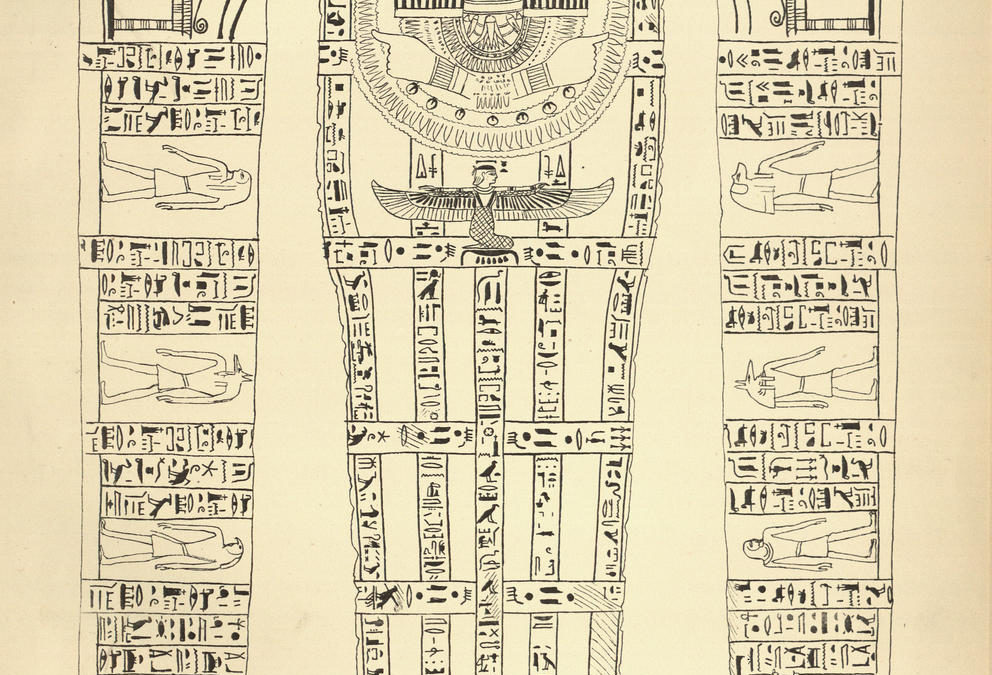
by Moe | Sep 26, 2019 | Freemasonry, History of the Brotherhood
The ancient Kings (Lords) of the East had two forms of government in which the king employed a governor to rule over their empire’s stone quarries, commerce, religion, and military by the royal title of “Tirshatha” (Turshatha, Tarshatha, Tursha, Tuirsha, תּרשׁתא, tirshāthā’, Ἁθερσαθά, Hathersathá).
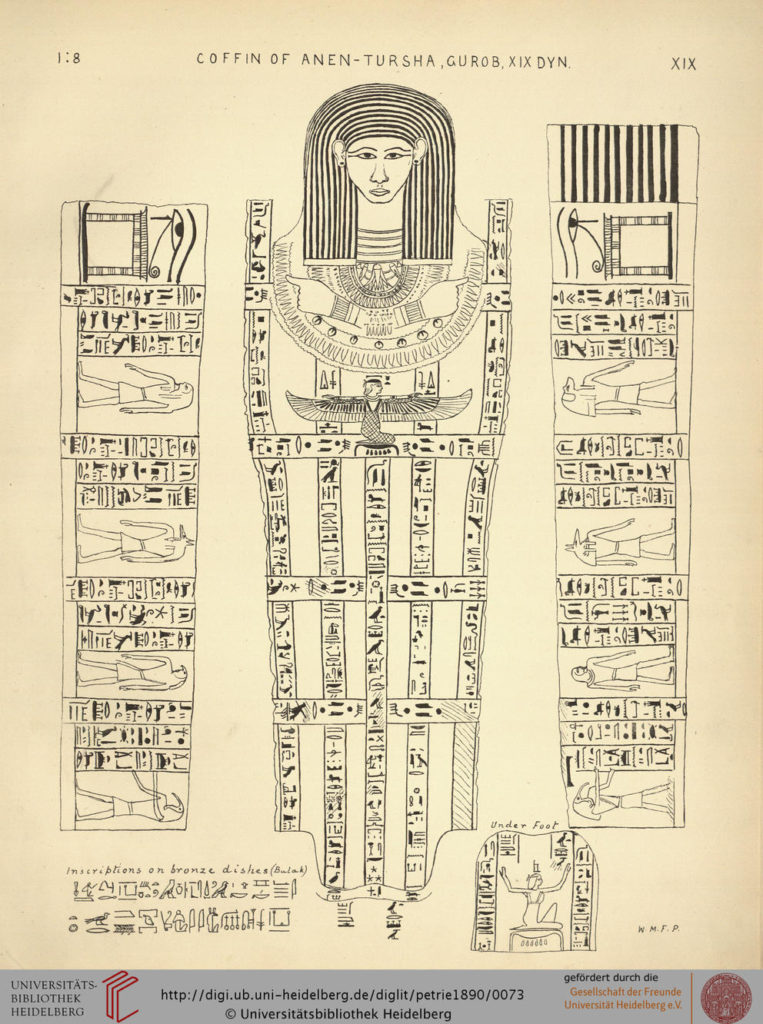
In the Bible, one of the most important and if not favorite of the Tirshatha (Turshatha) is mentioned by the Prophet Erza who calls Zerubbabel (Zorobabel) “the man for the occasion.”
For example, we learn in the Scripture that “Nehemiah presided as Tirshatha at the national sealing.” “Nehemiah did not become Tirshatha of Jerusalem until the twentieth of Artaxerxes,” and “Eliashib, the grandson of Jeshua, was a high priest when Nehemiah was made Tirshatha.”
According to the Book of Ezra 1:1-2, “With the blessing of Cyrus, Zerubbabel, and Jeshua the high priest leads marked out as the representative of the Persian king.”
After leading their return from the 20 years of Babylonish captivity, it appears that Zerubbabel who we know by his official title that he was sealed as the legal representative of the Persian king, the “Tirshatha for Persia.”
The word is used of officers and governors under the Assyrian (2Ki 18:24; Isa 36:9), Babylonian (Jer 51:57; Eze 23:6,23; see also Ezr 5:3,14; Ezr 6:7; Da 3:2-3,27; Da 6:7 [Hebrews 8]), Median (Jer 51:28), and Persian (Es 8:9; Es 9:3) monarchies. Under this last we find it applied to the rulers of the provinces bordered by the Euphrates (Ezr 8:36; Ne 2:7,9; Ne 3:7), and to the governors of Judaea, Zerubbabel, and Nehemiah (comp. Mal 1:8).
Like me, one of the world’s most famous physicists and mathematicians during the 17th-century scientific revolution, Sir Issac Newton who happened to be an excellent Biblical scholar, had cofounded using math and logic had Zerubbabel (Ezra 2:63; Neh 7:65, 70), and Nehemiah (Neh 8:9; 10:1) because they are one and the same persons
Newton had written;
“Comparing, therefore, the Books of Ezra and Nehemiah together, the history of the Jews is, that they returned from captivity under Zerubbabel In The First Of Cyrus, dwelt in their cities until the seventh month, and then coming to Jerusalem, they first built the altar” (Ezra iii. 2), “and in the first day of the seventh began to offer the daily burnt-offerings, and read in the book of the law, and they kept a solemn feast, and sealed the covenant.”
I believe that this title was given to both Zerubbabel (Ezra 2:63; Neh 7:65, 70), and Nehemiah (Neh 8:9; 10:1) because they are one and the same persons which can easily be sorted out given the facts that they lived at the same time, they were both from the Tribe of Judah, and assigned by the Persian royalty as governors and priests which at the time was only assigned to one person or Tirshatha.
It appears that after the 20 years of captivity and upon his return to Jerusalem, Zerubbabel then takes on the surname (holy name) of “Nehemiah” (Neh. viii. 9, x. 1) after he becomes “sealed on the head” and becomes a national hero for his Great Work of rebuilding the walls of Jerusalem, for the first time since their destruction by Nebochenezzer.
You will find that all the priests who came up with Zerubbabel (Nehemiah xii. 1), are exactly the same priests who sealed the covenant with Nehemiah and Ezra at the time of the feast (Nehemiah x. 1). Among those sealed and my readers should find no surprise was Obadiah who was one of the priests who signed and sealed the same covenant (Neh. x. 5.) who may be cofounded with Iddo, Neh. xii. 4. who returned with Zerubbabel. (See Sir Isaac Newton)
The key to understanding this chronology is found after Nehemiah arrives at Jerusalem when he now expressly speaks of “the former governors who had been before him, and were chargeable to the people.”
This passage clearly shows us that before they were conquered by the Persians and upon their appointment of the Persian Tirshatha as a legal representative or governor who we can say is “chargeable for the king (Lord),” the former Kings and governors of Judah were “chargeable to the people.”
Later, in the time when Cyrus’s son Darius had ruled Persia, Zerubbabel is famously credited with the future independence of his people by laying the foundation of the Second Temple in Jerusalem soon after and restoring that city to its former state and dignity, as a fortified town.
This may be the reason why we find the Tarshatha immortally honored by modern Masons as the degree of Knight of the East in the Ancient and Accepted Scottish Rite, according to the modern ritual of the Southern Jurisdiction of the United States, for Tirshatha, and applied to the presiding officer of a Council of Princes of Jérusalem. (An Encyclopedia of Freemasonry and Its Kindred Sciences, Volume 2)
According to the prophet Haggai who prophecizes; “On that day, says the Lord of Hosts, I will take you Zerubbabel, son of Shealtiel, my servant, and wear you like a signet ring; for it is you whom I have chosen. This is the word of the Lord of Hosts’” (Hag. 2:23).
Here we have another important clue as to the identity of these people with the words “he is chosen, a servant to the Lord and signet ring.”
Erza tells us how Zerubbabel, now named “Nehemiah” came to Jerusalem as “viceroy of Tirshatha,” clad with full powers, rebuilt the walls and adopted and enforced the legal reforms for the next twelve years.
Josephus that “after the death of Cambyses, and the slaughter of the Magi, but under the reign of Darius, Zorobabel was superior to the rest in the solution of problems; and thereby obtained this favor of the King, that the temple should be built.”
Josephus writes, “After the slaughter of the Magi, who, upon the death of Cambyses, attained the government of the Persians for a year, those families which were called the seven families of the Persians appointed Darius, the son of Hystaspes, to be their King.
Now he, while he was a private man, had made a vow to God, that if he came to be King, he would send all the vessels of God that were in Babylon to the temple at Jerusalem.
Now it so fell out, that about this time Zorobabel, who had been made governor of the Jews that had been in captivity, came to Darius, from Jerusalem: for there had been an old friendship between him and the King.
He was also, with two others, thought worthy to be guards of the King’s body; and obtained that honour which he hoped for.”
For his great Work, Zerubbabel was immortally enshrined as a prince of the blood-royal where he is emphatically called, the Prince, of the kings of the earth, Rev. i. 5. the King of kings and Lord of lords, Rev. xix. 16.
In Neh. ix. 38. and x. 1, 28, 29. it is said, “And because of all this, we make a future covenant, and write it ; and our princes, Levites, and priests seal unto it.
Now those that sealed were Nehemiah the Tarshatha, and the rest of the people, the priests, the Levites, the porters, the singers, the nethinins, and all they that had separated themselves from the people of the lands unto the law of God, their wives, their fons and their daughters, every one having knowledge and having understanding;
They clave to their brethren, their nobles, and entered into a curse and into an oath, to walk in God’s law, which was given by Moses, the servant of God, and to observe and do all the commandments of the L O R D our God, and his judgments and his statutes.”
SCIENTIFIC PROOF OF THE TIRSHATHA IN EGYPT
In my previous article, Tyre-Egypt: God’s Ancient Stone Masons of the Tora, I share my research in regards to a Tirshatha discovered in 1889 when an Egyptian archaeologist found what has been described as a “yellow-haired mummy” or “blonde person” that was a high or royal named Ш, wml Ё Ш Ъ Ш l, “An-Tursha”, “Anen-Tursha” or “Stone, Rock or Pillar of the Tursha”, and was governor of Heliopolis.

This mummy was found at a famous ancient stonemasons quarry called today Tura, Egypt that had produces some of the most famous and prized limestones in all the world. The stones mined here helped finish the pyramids and for the royal sarcophagus.
Some of the most powerful rulers for the Pharoah had ruled the Southern Kingdom of Egypt from this region which happened to produce not only some of the worlds finest stones and masons but also scribes, priests, and one of the world’s most powerful Navy operations.
The stonemason’s town of Tura bordered the Nile and thus the Mediterranean giving them exclusive access not only to the Pharoah but also Naval military access and the power of commerce for the region which must have been the most important shipping port in all the world.
These ancient facts I believe were the beginning stones for the foundation of the wealth for the noble families of Tyre who we now know were the king’s governors as late as the time of King Cyrus and as early as the 15th century BC in Tura, Egypt with the archaeological find of “An-Tursha”, “Anen-Tursha” who was governor of Heliopolis.
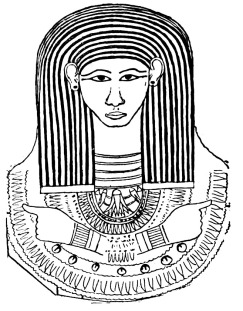
As I explained in the article, the native name of Heliopolis was I͗wnw (“The Pillars or The Stones”) which again connects to the people of stone ie: Tyre (Tur, Tor, Tora etc) to Tura, Egypt and also the Tursha (Sea Peoples). In Roman Egypt, the city belongs to the province Augustamnica, causing it to appear as Heliopolis in Augustamnica when it needed to be distinguished from Baalbek. Today, it remains a titular see of the Roman Catholic Church.
THE WORDS THAT BOTH CONCEAL AND REVEAL
Not surprisingly, the Levitical Scribes have encoded a special etymological meaning into the name of Zerubbabel and Tirshatha to signify a clue to his regal authority and role as a witness.
Like most names in the Scripture, they are composed of compound words that I believe are meant to relay a special message to their descendants and is meant to be understood only for the initiated ie: a select few (sealed by the sacrificial Oaths and reincarnated of the royal blood).
MEANING OF TIRSHATHA
It is said that the name Tirshatha is a Persian word for “Governor, His Excellency or His Reverence” title is used interchangeably with ‘governor,” and apparently represents an important or royal person who is “appointed by the King for a special mission.”
The meaning I have found in these names whether it be Tirshatha, Turshatha, Tursha, or Tuirsha is a bit different than the current narrative.
My research shows that they are compound words composed of Tir or Tur and Sha and sometimes with the appellation of tha at the end.
As I detailed in my previous article, Tyre-Egypt: God’s Ancient Stone Masons of the Tora, the ancient words variously spelled as tir, tur, tor and tyr can be used interchangeably to mean “rock, stone and or mountain” in which later times it became to be known as the equivalent of “governor, Lord, master or King.”
Especially when used in reference to their Tirshatha descendants and names of their cities which they ruled such as Old Tyre and New Tyre along with many other cities around the seafaring globe.
The word sha or shu are used frequently in the narratives of the Old Testament often in association with the servants (slaves) of the King ie: governors, the state religion and or the official names for the Levite priest or Prophet.
For example, Jo-shu-a was servant to Moses, Eli-sha to Elijah, and Eli-sha himself had a servant, Gehazi or a sha-ash’gaz (Heb. ttfttf. shahash-gaz’; Sept. Vat, gai), the appropriate name (meaning in Persian, servant of the beautiful) of a Persian eunuch, the keeper of the women in the court of Ahasuerus (Esth. 11:14), B. C. about 525.
The word Shaddai (sha’da-i), (Heb. “Ds, shaddah’ee, the Almighty; Vulg. in Pentateuch, Omtiipotens) is an epithet or name applied to Jehovah, sometimes with (Gen. xvii: 1; Exod. vi:3), and sometimes without (Gen. xlix:25; Kutli i:20, 21, and elsewhere), the prefix El for God.
In the Authorized Version the name is given as El-Shaddai where it first occurs; but is everywhere else rendered by ‘Almighty,’ which is the true signification, the word being plural of excellence from the singular, ‘mighty,’ ‘powerful.’
In the Scrip-tur, we meet a Levite named Shabbethai (sha-beth’a-i), who was a chief of the Levites who assisted Nehemiah in instructing the people in the law (Neh. viii :7; xi :i6) and assisted in enumerating those who had married foreign wives (Ezra x:i5), B. C. about 450.
One one of David’s famous guards was named Shabia or Shama (sha-ma, nHeb. shaw-maw) (1 Chron. xi:44; v:8).
Several very important people are named Shalum (shal’lum), (Heb. Bw, shafloom’, retribution)such as the 15th king of Israel who followed the death of Jeroboam If (B. C. 772), his son Zechariah was slain in the presence of the people by Shallum, who by this act extinguished the dynasty of Jehu.
Shallum is a king of Judah, son of Josiah (Jer. xxii: 11), better known by the name of Jehoahaz (B. C. 781). He was spared in the desert when the earth opened and swallowed up his father (Num. xvi:3i). His descendants had an office in the temple, to take care of the cakes that were fried there.
Shallum is listed as a Son of Shaul, a descendant of Simeon (1 Chron. iv:23), Levite priest, descended from Bani, who married a foreign wife (Ezra x:42)(Ezra x:24) and the last son of Napthali (1 Chron. vii 113).
Later we have a man named Shadrach who is listed as one of the three friends of Daniel who were delivered from the burning, fiery furnace.
We also have Shamir (sha’mir) who is called a “Kohathite Levite, son of Michah, and a servant under David in the sanctuary (1 Chron. xxiv:24). He is given the title of “A precious stone, named in Jer. xvii: 1; Ezek. iii:9; Zech. vii:i2. and is listed as a city of Judah (Josh. xv:48) and a city in the mountains of Ephraim, where Tola lived and was buried (Judg. x:l, 2).
Let me please add that there is also an infamous Masonic worm named Shamir (sha’mir) whom King Solomon had used to help him build Solomon’s Temple.
In the Hebrew tradition and as it is written in the Torah, we find that ten things were created on the eve of the Sabbath,” and among which is the Shamir. The story relates how Solomon sent his general Benaiah (Obediah, Bediah, Beda, Bedard) armed with his signet ring of Solomon to the King of demons, Asmodeus, with orders to bring unto him Shamir (the worm).
This Shamir was the “most excellent servant” who had helped Solomon with the stones of the Temple; “there was neither hammer nor axe, nor any tool of iron, heard in the house while it was in building.” (1 Kings vi, 7)
THE MEANING OF ZERUBBABEL
The compound word Zerubbabel contains the four words zer, ub, bab, and el.
The meaning of zer, zur, zir, and or zor are variations of the words sur, sar, and or sor which synonyms for the words “rock, stone, and or mountain.”
For instance, in the Scripture, the name Zu’ri-el means my rock is God; the meaning of Bethzur (beth’-zur) is House of the rock; place of rock and Zu’ri-shad’da-i, the Almighty is my rock.
The name Zer is mentioned in the Bible as one of the fortified cities in the territory of the tribe of Naphtali and is identical to one of two variants of the name of the Phoenician city Tyre (צר and צור). We know that Hiram’s mother was from Naphtali and he was one of the most famous Kings of Tyre (1 Kings 7:13-14).
As I explained in my article, the word Tyre is derived from the ancient word for rock, stone and or mountain which was tur, tar, tir, tyr etc.
The next word in Zer-ub-bab-el is ub which is synonymous with the words ab, eb, and or ib which is variously translated as “Father, origin, source, a fountain and or something proceeding from a fountain.” For example, Ab means father in Arabic, and Abi becomes “my father”.
Ab is one of the most popular appellations in the Scripture with names such as;
Abimelech, Ab-im’-me-lek, father of the king; Abi’hdd, the father of praise or confession; Abijah, the father of God; Ab-i’-jak, the will of the Lord. Abi’jam, father of the sea; Abinadab, Ab-in’-na-dab, father of willingness, Abiram, Ab-i’-ram, a high father, and Abishalom, Ab-bish’-a-lom, the father of peace; Ab’ner, father of light, the son of the father. Ab-ra-ham, the father of a great multitude; and A’bram, a high father, the father of elevation.
The last word in Zer-ub-bab-el is el which means “God” and is also spelled al, and il.
” Adon (ruler) into his palace” instead of “Adon (Lord) into his temple”—has first made congruous and clear— to the writer, at least. “Behold I will send my harbinger and he shall prepare the way before me. The ruler whom ye crave (Nehemiah) shall come suddenly to his palace, even the herald of the covenant whom ye demand. Lo, he will come, saith Jahveh Sabaoth. But who (of the transgressors) will bear the day of his coming? Who will stand when he appeareth? For he is like the refiner’s fire and the lye of washers,” etc. In the last chapter of his memoir, Nehemiah records in few words how literally he sat as a refiner and purified the sons of Levi. Those who would not repent and part with their alien wives were relentlessly banished.
We learn from Josephus in Chapter 5 that “Upon the death of Darius, his son Xerxes inherited his father’s Kingdom, and so did he inherit his piety towards God. For he did all things suitably to his father relating to divine worship; and he was exceeding friendly to the Jews.”
The Greeks called Cyrus by the name Artaxerxes and Xerxes is the abbreviated version of the same name.
After the death of Xerxes, the Kingdom came to be transferred to his son Cyrus; whom the Greeks called Artaxerxes.
At the time, Nehemiah AKA Zerubabbael was still Tirshatha for the Persians – AKA Governor of the Jews and the son of Jeshua, whose name was Joacim, and was the High Priest who was very skillful in the laws of Moses; and was well acquainted with the Persian royal house.
Joacim is credited with writing to the other governors of Syria the following epistle in order to have his priests and Masonic Levites to start rebuilding the Temple;
“Xerxes, King of Kings, to Esdras, the priest, and reader of the divine law, greeting. I think it agreeable to that love which I bare to mankind, to permit those of the Jewish nation that are so disposed, as well as those of the priests and Levites, that are in our Kingdom, to go together to Jerusalem.”
Later Josephus tells us that Nehemiah was one of those Jews that had been carried captive, who was cup-bearer to King Xerxes. After hearing about the destruction of Jerusalem, Nehemiah shed tears and said, “How long, O Lord, wilt thou overlook our nation; while it suffers so great miseries; and while we are made the prey and spoil of all men?”
King Xerxes cast his eyes on Nehemiah; and seeing him look sad, he asked him, why he was sad? Whereupon he prayed to God to give him favour, and afford him the power of persuading by his words; and said:
“How can I, O King, appear otherwise than thus, and not be in trouble; while I hear that the walls of Jerusalem, the city where are the sepulchres of my fathers, are thrown down to the ground; and that its gates are consumed by fire. But do thou grant me the favor to go and build its wall, and to finish the building of the temple.”
Josephus concludes; “Accordingly the King freely granted him what he asked and gave him an epistle to be carried to Adeus the governor of Syria, and Phoenecia, and Samaria. Wherein he sent to him to pay due honor to Nehemiah; and to supply him with what he wanted for his building.”
It is no surprise that given his stature an Ancient Freemason, we find in modern Freemasonry that Zerubbabel is called the “Prince of Jerusalem” and part of the Royal Arch degree ceremony in which a Master Mason is advanced to Companion is called Exaltation.
Holy Royal Arch Chapters are governed by three Principals, who conjointly rule the Chapter, sitting together in the east of the assembly.
It makes sense that Zerubbabel is also known as “the receiver of an apocalypse” who in the seventh-century Apocalypse of Zerubbabel is also known as Sefer Zerubbabel which is said to contain the prophecy given to him from God.
This is the word of the Lord to Zerubbabel:
“Not by might nor by power, but by My Spirit,’ says the Lord of hosts.”
“Who art thou, O great mountain before -Zerubbabel?
Thou shalt become a plain, and he shall bring forth the headstone (capstone) thereof with shoutings, crying, Grace, Grace, unto it.
The hands of Zerubbabel have laid the foundations of this house, his hands shall also finish it, and thou shalt know that the Lord of Hosts hath sent me unto you.
For who hath despised the day of small things.”
Moe is the founder of GnosticWarrior.com. He is a father, husband, author, martial arts black belt, and an expert in Gnosticism, the occult, and esotericism.
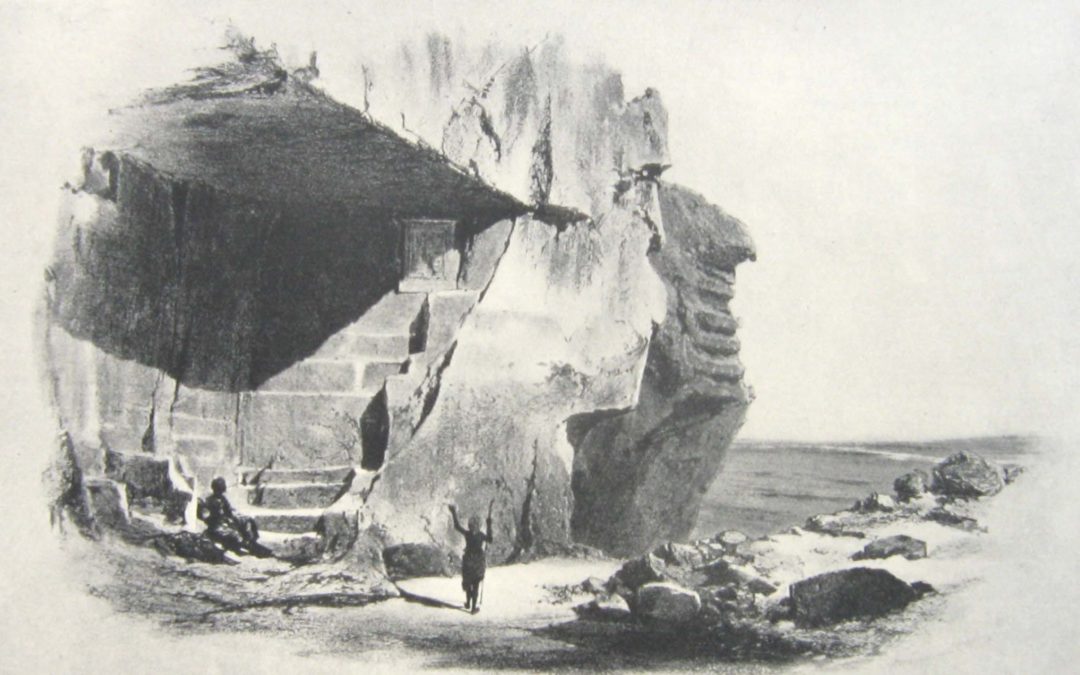
by Moe | Sep 22, 2019 | Freemasonry, History of the Brotherhood, Latest Media
In my search for the ancient meaning of Tyre, I have come to the etymological revelation that it is derived from the word for special type of ancient Egyptian limestone rock called today “Tura or Tora.”
Today, you will find these holy stone quarries of Tyre, Egypt located in the modern town of Tora in the Cairo Governorate.
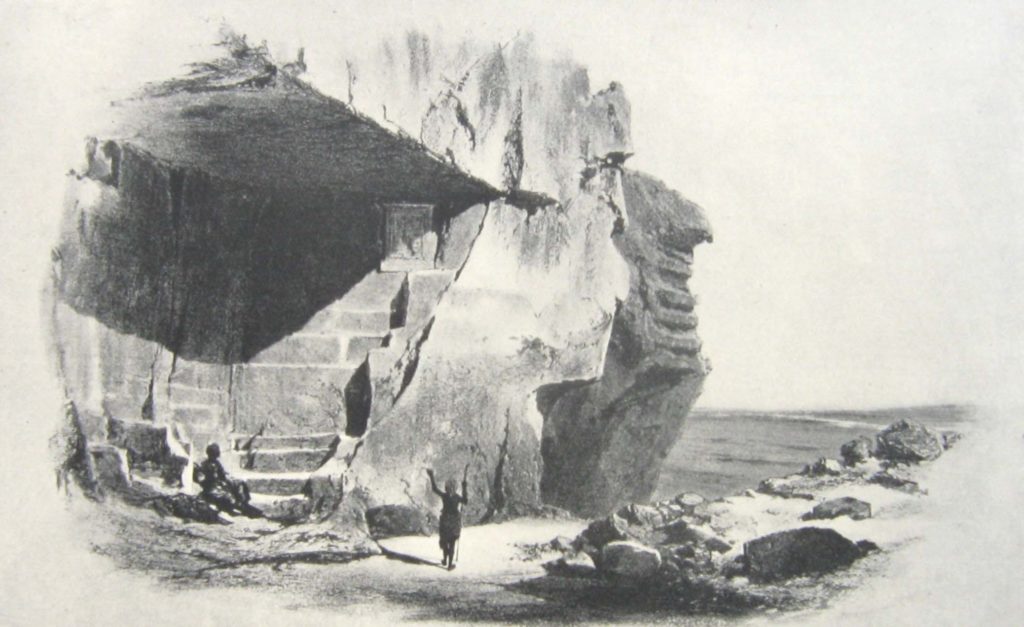
Please keep in mind that as you read my research below, the Old city of Tyre is documented in Masonic mythology as being the home to the de-facto king of the Freemasons, Hiram Abiff. A person who I have also connected to in previous articles to the first King of Tyre, Abibalus (Obediah, Abi-Beda etc.) and also King Saul who was credited biblically as the first king of the combined kingdoms of Judah and Isreal.
It is also important to note that the men of Tyre ie: The Tyranians were not only builders – ie: Masons, they were also employed in the arts of shipbuilding, writing, linguistics, history, Babylonian magic, religion, weapons-making, military planning, and most of all, commerce which all can be easily corroborated via historical, biblical, and now scientific accounts which validate one another.
THE MYTHS OF TYRE AND THE MANY DIFFERENT SPELLINGS THROUGH TIME
In studying the etymology of the word Tyre, I have found that it has been spelt variously over the last 2,000 plus years as Tiryns, Tyrsenoi, Tyresenes, Tyros, Tyrus, Tyrosh, Tyrion, Tyrseni, Tarshish, Tarsus, Tura, Turan, Tora, and or Tursha to name a few.
To give you a small example of the different spellings found in the course of my research, we can find that Tyre is spelt numerous ways in the Bible such as Tarshish – (‘the ships of Tarshish’) and xxxviii. 13 (‘merchants of Tarshish ’).
The expression ‘the ships of Tarshish’ which occurs several times in the Bible (1 K.x.22: xxii.48: Ps. xlviii. 7: Is. ii. 16: xxiii. l, 14 (in connection with Tyre) and has also been identified with the Hebrew name for Tartessus or South Spain and with Carthage (so the Septuagint Ezekiel and in Is. xxiii. in a passage which refers to Tyre), with Tarsus.
I have also found multiple locations of the city Tyre in which the Mother City was known as Palaetyrus (ancient Tyr) and was located on the mainland in the classical sources. Meaning, there were two Tyres which I will explore more in-depth in a future article.
In Greek mythology, Tyros or Tyro was the Goddess-mother of the Tyrians and Tyrrhenians, or Tyrsenians whose father was named Cretheus (Crete) along with Sidero (Sidon), and Eolus, who are credited as the founders of cities in Hellas.
All the great historians and poets mention the Men of Tyre under the name of the place they call Tyree or Tyry and the people under the appellation of the Tiryns, Tyrsenoi, Tyresenes, and or the Tyrsenians. The Greeks had called the Etruscans by the name of the Tyrsenoi.
As early as the 15th-14th centuries BC, we hear of a place and a people known as the Tiryns who are both expert Masons and mariners of the Sea.
The Penny Encyclopedia gives us this description:
“The Greeks attributed most architectural works § were characterised by rude massiveness and great antiquity to the Cyclopes, and such works were consequently described as Cyclopean. Homer (Iliad, ii. 559) calls Tiryns the ‘walled, or rather the ‘wally ‘Tiryns: and Pausanias (ii.25), 1000 years after him, thus describes the remains, as they existed in the second century of our aera.
“The ruins of Tiryns, he observes, “were on the right of the road leading from Argos to Epidaurus. The wall of the fortification, which still remains, is the work of the Cyclopes, and is built of unwrought stones, so large that not even the least of them could be even moved by a pair of mules.”
In mythology, King Proetus was the reputed founder of Tiryns, was succeeded by his son Megapenthes, who exchanged Tiryns for the kingdom of Argos with Perseus, son of Danaë and Jove, the mythic founder of Mycenae (Pausanias, II., 16).
At the time of the Trojan war, Homer (Iliad, ii. 559) represents it as being subject to the kings of Argos. Subsequently, it was partially destroyed by the Argives.
The date of that event is uncertain; but from two passages of Herodotus (vi. 83, and ix. 28), in which mention is made of Tiryns, it appears that it existed up to B.c. 480, and it is probable that it was overthrown about the same time as Mycenae, B.C. 468. (Clinton, Fasti Hell., ii., p. 425.)
According to Strabo (viii., p. 373), the Tirynthians, on leaving their homes, retired to #. idaurus : according to Pausanias (ii. 25),
There was an ancient tradition that there was an old people called Tyrsenes in the north Aegean Sea who was later identified with the Attic Pelasgians and rulers of Athens.
We read about Tyrsenoi in Homer’s Hymns to Dionysos, about how the god Dionysos appeared as a youth on the sea-shore, and was seized by Tyrsenian pirates (Sea Peoples), who in vain attempt to bind him.
Thucydides identifies the Pelasgoi with the Tyrsenoi.
Tiryns is today called an ancient archaeological site in Argolis in the Peloponnese and the location from which mythical hero Heracles performed his 12 labors.
There is also the legend of the Cretan king’s general named “Taurus” who carried off Europa after having taken Tyre by storm.
When speaking of the Tyranians, the great Roman poet Tibullus had said, “Prima ratem ventis credere docta Tyros.”
It is easy to see how the Greek myths of the Tyrsenoi from Tiryns and the Tyr-senian pirates or the Tyr-senoi can be connected to the Tursha AKA Sea Peoples and ultimately to Tyre. It is in the meanings of these various words where I believe we can easily discover the secret origins of these people from Tyre – the Tyranians (Tyrrhenians)., meaning their original homeland.
Words that I believe can also be etymologically connected to a special book where they document their history and laws known universally as the “Torah” AKA Tur-ah – the Hebrew or Phoenician Bible which is also known as the Old Testament. We also know of these collective writings as the scripture of skrip’-tur in which Moses was given the Laws upon stone tablets of Turs.
THE ETYMOLOGY OF TYRE
All this research leads us to the true meaning of Tyre which I have found is derived from the old word for rock or stone which was anciently called “Tur, Tsur, Tzor, Tor, Tora, Toorah, Tura,” to name a few. These words are variously translated to also mean mountain for it is from the mountain which we obtain the rock or stone to build.
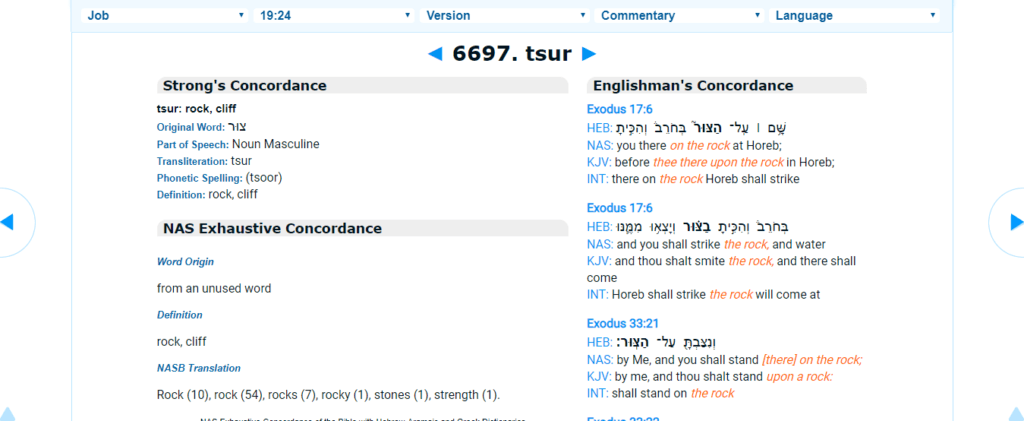
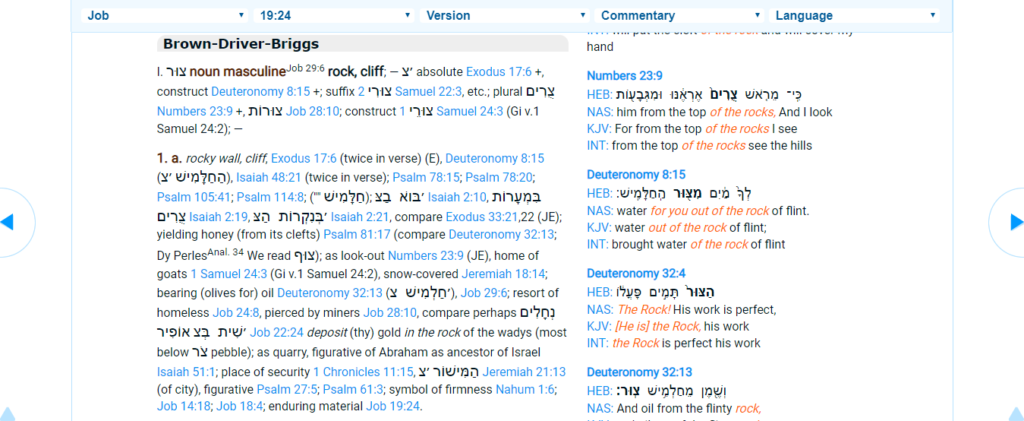
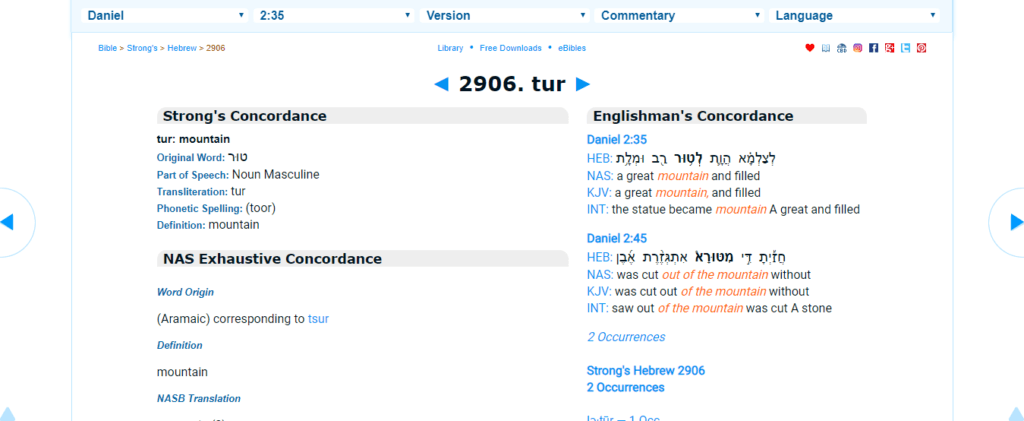
The main revelation of this word is found in one of the oldest cities in the world that housed one of the most infamous of all rock quarries in Egypt and the world.
A city called Tura and someday we may call it again, “Old Tyre.”
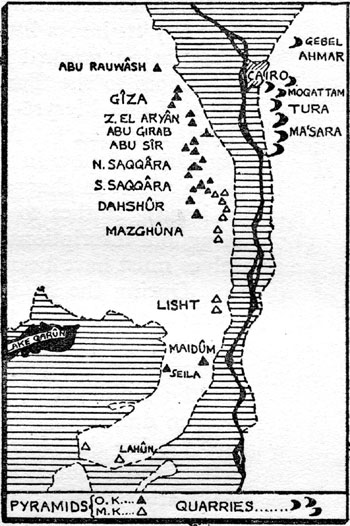
Tura or Tora, Toorah etc. (Egyptian Arabic: طرة Tora IPA: [ˈtˤoɾˤɑ]) is the exact location where Ancient Egyptians or who we may call Masonic Tyranians drew massive quantities of special type of limestone that was the most prized in all the world because it was the strongest, whitest, and most beautiful.
It is alleged by some researchers that approximately or precisely 144,000 of these highly polished Tura limestones were carefully interlocked together by Masons who decorated the exterior of the Great Pyramid of Giza. The brilliant result was the whole structure was illuminated white in the light of the reflected sun.
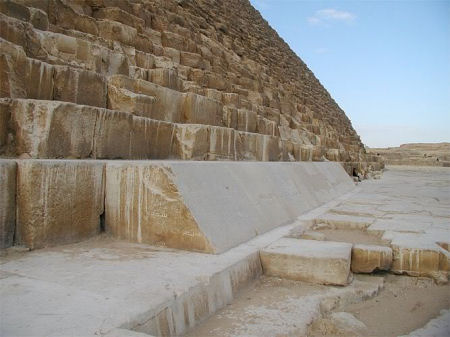
This unique stone is described today as creamy in colour and the denser the stone, the stronger which the densest stones can be found in Tura ie: Old Cairo. The greater the density the less the water absorbed and the cracking load is not much under the breaking load.
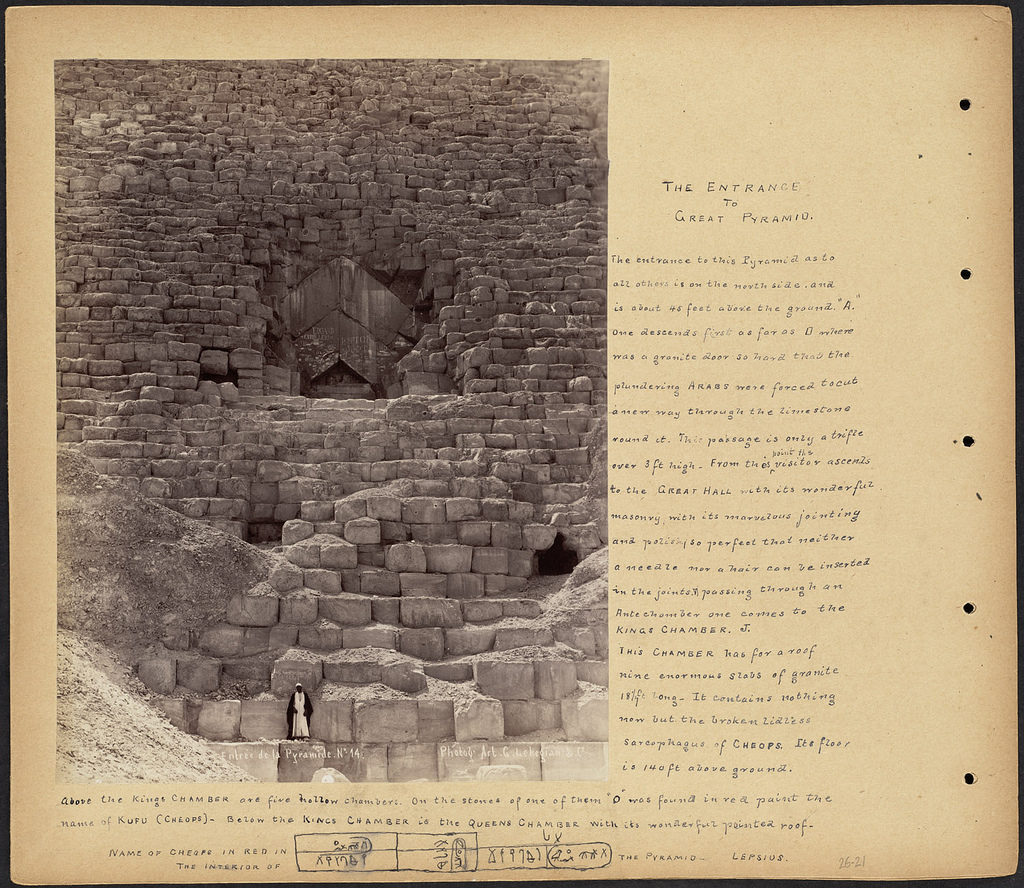
In Etruscan mythology, the “God of the boundary stone” was called “Turm” which can easily be connected with Tur.
A turret (tur-ret) is a little stone tower (from Lat. turris, Gk. rvpaa, tyrsis, riippa, tyrris, tower).
Another precious tur or stone of a beautiful blue colour worth mentioning is called “tur-cois, tur-kis or turquoise” which was highly prized by the Ancient Egyptians, who opened Turquoise mines in the Wadi Maghara, in the Desert of Sinai.
An Arabian authority on precious stones, Ahmed Teifascite, born about 1253, in writing about the turquoise quotes from Aristotle as follows;
“The turquoise is a stone with which the Kings of Damascus never failed to adorn their necks and hands and to employ for many other purposes because, among the great, the stone possesses the property of removing from its wearer the danger of being killed. Furthermore, when reduced to powder it is of assistance in case of stings from scorpions and dangerous and venomous reptiles.”
It appears through time, the words tor, tur, tyr, tir, tora, tura etc. became known to also variously mean mountain, chief, Lord, God, and or prince for their descendants.
For example, in ancient Egypt, the Pharoah had a turdannu (turtan), meaning “commander-in-chief” (POTUS) in charge of the administrative affairs of Egypt.
We find the Anglo-Saxon word fir, and tyr, meaning lord, prince, chief, as well as glory, dominion, power and Tyr in the Edda who was the name of the god corresponding to Mars.
Tur is the meaning of mountain in Aramaic.
The meaning of Tartar is a hard calcified deposit that forms on the teeth and contributes to their decay and also means an unkind or angry person and a member of any of the various tribes, chiefly Mongolian and Turkish, who, originally under the leadership of Genghis Khan.
A Scottish Highlander or Scotsman was known as a “Tartan” in ancient days. These Tartans wore a special type of clothing called tartaryn (“rich material”), from Middle French tartarin (“Tartar cloth”), and Middle French tiretaine (“cloth of mixed fibers”), from Old French tiret (“kind of cloth”), from tire (“oriental cloth of silk”), from Medieval Latin tyrius (“material from Tyre”), from Latin Tyrus (“Tyre”).
There are the gods of Old Asia Minor, Tar and Tarku who are clearly connected with the word Tara or Tora for it is the Esthonian word for “God,” and with Tar, “chief.”
Then we see the Akkadian Tur-an who is the “Chief of the Sky.”
The Report and Transactions – The Devonshire Association for the …, Volume 7 further documents;
Lu Gibson’s edition of Camden’s Britannia, we are informed that Brent Tor is a name signifying ‘a high rocky place.’
Pliny mentions dyr as a Mauritanian word for Mount Atlas. Taurus is the same designation Latinized in Asia.
For the Arabs, Tours is an elevated spot in the Gulf of Suez.
In Norway, Tours is the name of one of the highest mountains.
King—”The word occurs in both Somersetshire {Glastonbury Tor) and Derbyshire, and is apparently cognate with the Hebrew Tsoor = a rock, and the Phenician Tor = Tyre (compare also the Turkish dagh, and the form which occurs so frequently in the Caucasus).” pp. 208-9.
Moore—” Tor. A rude rack [? rock. W. P.] on the top of a hill.”
Bannister—” Torr. Prominence or hill {tor, a belly); a peak {tour, tower); water {dour).” Halliwell—” Tor. A bill. Devon.”
Grove—” Tor. A high rock; as Mam-tor, a high rock in Derbyshire. North.”
Prince—”Brewer, Lord William, was bom …. most likely at Tor Brewer, so called of old from the torrs and rocks which abound in these parts, and this noble family. But of latter times … it is commonly stiled Tor-Mohun.”
The best explanation that I have found similar to my own is by author Sir William Smith in his book, A Dictionary of the Bible: Red-Sea-Zuzims. Sir Smith writes;
“TYRE (nix, n’s, i.e. Tzór: Túpos: Tyrus: Josh. xix. 29; 2 Sam. xxi ‘. 7; Is. xxiii. 1; Ez. xxvi. 15, xxvii. 2, &c.). A celebrated commercial city of antiquity, situated in Phoenicia, on the eastern coast of the Mediterranean Sea, in latitude 33° 17’ N. (Admiral Smythe’s Mediterranean, p. 469).
Its Hebrew name “Tzór” signifies a rock; which well agrees with the site of Sár, the modern town, on a rocky peninsula, formerly an island.
From the word “Tzör” were derived two names of the city, in which the first letters differed from each other, though both had a feature of their common parent: 1st, the Aramaic word Tura, whence the Greek word Turos, probably pronounced Tyros, which finally prevailed in Latin, and, with slight changes, in the modern languages of the West; and, 2ndly, Sara, or Sarra, which occurs in Plautus (Truc. ii. 6, 58, “purpuram ex Sarā tibi attuli”), and which is familiar to scholars through the well-known line of Virgil, “Ut gemmá bibat, et Sarrano dormiat ostro” (Georg. ii. 506; comp. Aul. Gell. xiv. 6; Silius Italicus, xv.203; Juvenal, X. 30).
According to a passage of Probus (ad Virg. Geory. ii. 115), as quoted by Mr. Grote (History of Greece, iii. 353), the form “Sara” would seem to have occurred in one of the Greek epics now lost, which passed under the name of Homer. Certainly, this form accords best with the modern Arabic name of Sár. PALAETYRUs, or Old Tyre.
There is no doubt that, previous to the siege of the city by Alexander the Great, Tyre was situated on an island; but, according to the tradition of the inhabitants, if we may believe Justin (xi. 10), there was a city on the mainland before there was a city on the island; and the tradition receives some colour from the name of Palaetyrus, or Old Tyre, which was borne in Greek times by a city on the continent, 30 stadia to the south (Strabo, xii. 11,24).
But a difficulty arises in supposing that Palaetyrus was built before Tyre, as the word Tyre evidently means “a rock,” and few persons who have visited the site of Palaetyrus can seriously suppose that any rock on the surface there can have given rise to the name.
To escape this difficulty, Hengstenberg makes the suggestion that Palaetyrus meant Tyre that formerly existed; “quae quondam fuit;” and that the name was introduced after the destruction of the greater part of it by Nebuchadnezzar, to distinguish it from that part of Tyre which continued to be in existence (De rebus Tyriorum, p. 26).
Movers, justly deeming this explanation unlikely, suggests that the original inhabitants of the city on the mainland possessed the island as part of their territory, and named their city from the characteristic features of the island, though the island itself was not then inhabited (Das Phönizische Alterthum, vol. ii. gt. i. p. 173). This explanation is possible; but other explanations are equally possible.”
In my opinion, the words whether it be Tzör, Tura, Tora and Tyre, they are all etymologically connected through history to the word stone or rock with similar meanings in various languages and we also find these names of some of the most important coastal and commerce settlements where they have left their cornerstones around the globe which I will explore in a future article.
AN OLD DESCRIPTION OF THE ANCIENT EGYPTIAN TOWN OF TORA (TURA, TYRE)
I thought it would be interesting to the reader to read this account from a book written in 1885 called “Lower Egypt, with the Fayûm and the peninsula of Sinai,” by Karl Baedeker gives us a clear account of the importance of this city. Baedeker writes;
“The railway to Helwān, which was constructed mainly for the purpose of connecting the great military establishments at Tura with the Citadel, runs from the Place Méhémet Ali, in a South direction. It skirts the base of the Mokattam, on the slopes of which are the interesting ruins of a mosque, and traverses the burial-ground of the Mamelukes (p. 327). To the right lies the oldest part of Cairo, with the Mosque of Tulān (p. 265).
On the same side, we next observe the Necropolis of Imām Shafe’i (p. 327), beyond which is the valley of the Nile, with the various groups of pyramids rising above it (p. 404). Before reaching (4 M.) Basātīn, a village situated in one of the angles of a triangular piece of arable land which extends a considerable way into the desert, we perceive the Jewish burial-ground on the left, and, farther on, the broad Wädi et-Tih (p. 339), which separates the Mokattam range from the Gebel Tura.
Traversing a tract of desert sand, the line approaches the Nile, on which lies the village of Tura.
A little to the right are the large military establishments and gunpowder mills. On the hill stand the ruins of an old fort. 91/9 M. Massara, a village on the Nile, is noted for the slabs of stone obtained in the neighbourhood, known as ‘palattes’, and used for paving purposes in almost every house of the better class in Egypt.
From either Tura or Masara we may visit the Quarries of Tura (p. 405), which yielded material for the construction of the ancient temples, and are still worked.”
THE EGYPTIAN TYRE, TURA, AND TURSHA CONNECTIONS
The Masons have left their stones of Tura (Tyre) that were used for many building projects who some estimate for approximately six thousand years at least. It was said that the architects of the pyramids made their quarrymen (Masons) tunnel into the mountains for hundreds of yards until they found a bed of stone suitable for their work, and traces of their excavations are still visible to this day.
Upon the ancient Egyptian monuments dated in approximately as early as 1300 B.C. or before, you will find the men of Tyre are called by the name the “Tuirsha, Tursha and or Turusa” who are clearly classified as a “maritime people” who had “invaded Egypt” and are listed as among the enemies of Egypt.
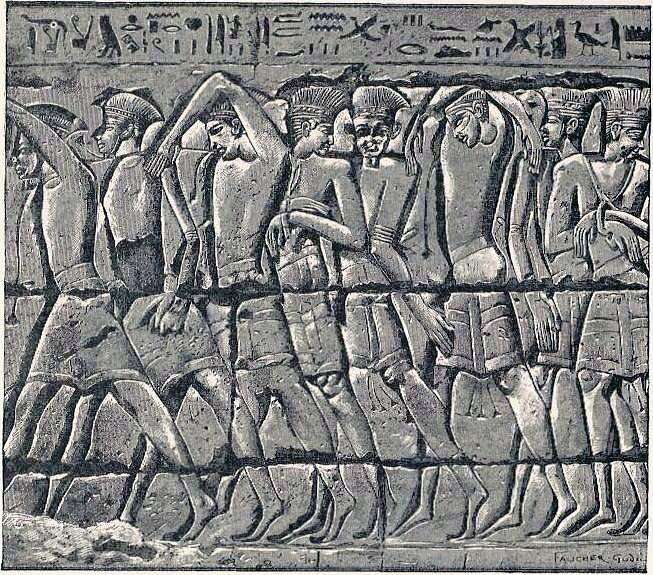
It is documented that during the reign of Meneptah, the Tursha invaded Egypt from the coastlands in alliance with the Libyans, Achaeans, and other coastal tribes from Asia Minor. It is said in the great inscription which records the defeat of these “Sea Peoples” or who we may now call the “Tyranian invaders.”
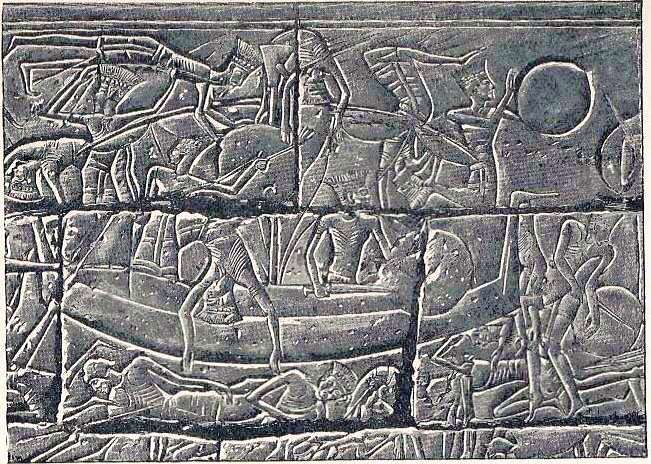
“The Tursha took the lead in this war, all the warriors from that country having brought their wives and their children.”
The fact that the Tursha (Men of Tyre) found a home in Egypt from the West by the time of Rameses III during the so-called great invasion of Greco-Asiatic and European tribes which has been generally accepted by most historians.
It is the mysterious but powerful people the Egyptians called the Tursha whom I have connected to the royal family of Tyre and their book, the Torah (Tura or Tora).
We that Moses upon his entrance into the Promise Land on top of a Holy Mountain (rock) was given the history and laws of his people that he had written down on “stone tablets.”
Stone tablets that are said to be composed of five books that are collectively called the “Tora.”
It is evident that these special stones or Tora (Tyre) play a significant revelatory clue to the immortal origins of these people and serve as cornerstones for future prophets to identify and reconcile this lost but revealable history.
These facts I believe can be further substantiated via a discovery made in 1889 when an Egyptian archaeologist named Mr. Flinders Petrie AKA Rock or Stone 😉 was excavating at Gurob in the Fayoum where he exhumed what has been described as a “yellow-haired mummy.”
This blonde person is described in the hieroglyphs as a high or ryal official who is called Ш, wml Ё Ш Ъ Ш l, “An-Tursha”, “Anen-Tursha” or “Stone, Rock or Pillar of the Tursha”, who, according to the rest of the inscription, was governor of Heliopolis.
The yellow hair ie: blonde hair and the lower lobe of “An-Tursha or Anen-Tursha’s ear is pierced indicating his foreign ethnicity which I believe to be of Tyrian origin.
To be a governor of Heliopopolis, you had to be a very important person who was in charge of all Lower Egypt and the coastal ports as well as the country’s religion and the Pharoah’s stonemasons.
The native name of Heliopolis was I͗wnw (“The Pillars or The Stones”) which again connects to the people of stone ie: Tyre (Tur, Tor, Tora etc) to Tura, Egypt and also the Tursha (Sea Peoples). In Roman Egypt, the city belongs to the province Augustamnica, causing it to appear as Heliopolis in Augustamnica when it needed to be distinguished from Baalbek. Today, it remains a titular see of the Roman Catholic Church.
The mummy, Anen-Tursha is described in The Discoveries in Crete and Their Bearing on the History of Ancient History by Ronald Montagu Burrows who says that the Tursha can be connected “with the group of names of invading tribes which can now with scarcely a doubt be equated with Achaeans, Teucri, and Danai.”
Burrows had written;
“It has been known for some years that there was buried in Egypt, at Gurob in the Fay urn, not much later than 1300 B.c., a high official called An-Tursha, or ” Pillar of the Tursha.”
The name is followed by the ethnic and the country determinatives, and the type of the mummy’s face, and the piercing of the lower lobe of its ear, are recognised by Professor Petrie as non-Egyptian.
It has been argued that this implies a settlement of foreigners called Tursha in the neighbourhood, and the name has been connected with the Thuirsha or Turusha who trouble Egypt with the Akaiuasha in the reign of Merenptah, 1234—1214 B.c.’ The name thus falls into line with the group of names of invading tribes which can now with scarcely a doubt be equated with Achaeans, Teucri, and Danai.”
Biblically speaking, if the Tursha are who I believe we can connect to the Men of Tyre and can also possibly be equated with the Danai ie: the Tribe of Dan, we can start to make more revelatory sense of this confusing history to make ORDO AB CHAO.
In researching both men of Tyre and Tribe of Dan, you will find that they were an interrelated royal family of mariners, shipbuilders, Masons, and judges of their people (race) through a very important son who in the bible is called Obed or Obediah and the Widow’s Son and Masonically speaking, he is known as Hiram Abiff who it is no surprise to me is also known as the Widow’s Son.
These connections can be found in the Scripture in the seventh chapter of the first book of Kings where it says;
“And king Solomon sent and fetched Hiram out of Tyre. He was a widow’s son of the tribe of Naphtali, and his father was a man of Tyre, a worker in brass: and he was filled with wisdom, and understanding, and cunning to work all works in – brass. And he came to king Solomon, and wrought all his work’ (ver. l3, l4).”
The connection to the Tribe of Dan is found via another parallel passage in the second chapter of the second book of Chronicles, ver. 13 where it says;
“Now I have sent a cunning man, endued with understanding, of Huram my father’s,’ (or perhaps Humm Abi by name,) ‘ the son of a woman of the daughters of Dan, and his father was a man of Tyre, skilful to work in gold.”
In researching the Sea Peoples known in ancient Egypt as the Tursha, you can clearly see how these same foreign yellow-haired people can be connected to the Men of Tyre which as I have mentioned can also be spelt, Tir, Tyr, Tar, and or Tur. Not only were the Tursha Sea People who were masters of the sea ie: boat builders and navigators, they were also classified as being stonemasons and traders ie: businessmen.
Several slabs of rock (Tora) bearing figures and hieroglyphics have been found in one of the great stone halls of Tura, Egypt.
An inscription on one of the chambers tells us that during the reign of Amenophis III. a new part of the quarry was opened. Una, an officer who lived in the reign of Pepi I., was sent to Tura by this king to bring back a white limestone sarcophagus with its cover, libation stone, etc.
In one presentation, it shows King Amenophis III. (18th Dynasty) sacrificing to the gods Ammon, Horus, and Hersheft; and on the other we find him worshipping Ammon accompanied by Anubis, Sekhet, and Hathor.
An inscription on one of the massive stone slabs reads;
“His Majesty ordered new halls (het-u) to be opened, for the purpose of quarrying the light-coloured and excellent stone of An for the construction of his buildings founded for perpetuity, after His Majesty had found that the halls of Rufui (Troja) had been tending to great decay since the time of those who had existed at the beginning (i.e. former generations). These were newly established by His Majesty”.
Another inscription from the time of Pharoah Nectanebus II., reads thus;
“This excellent quarry of Rufu was opened in order to construct the temple of Thoth, the twice great, the double Aperu, the fooler of the divine speech, etc. May (its) continuance be everlasting!”
Hence, “And I also say to you that you are Peter, and upon this rock, I will build My church; and the gates of Hades shall not overpower it.” (Matthew 16:18).
MY APOCALYPTIC CONCLUSION
It is obvious to me that the name that Masons hold to this day as one of their most important Kings, Hiram Abiff hails from a city that is variously called Tyre, Tyrus, Tarshish, and as we have learned from this research, we can also add Tora to the list.
Given the fact that they are Masons of whom their ancient ancestors were Stonemasons who hail from the city of the stone, Tora, Egypt which can also be called Tyre, Egypt and now can be used interchangeably.
It is revealed to us that these ancient people we know variously as the Men of Tyre and the Stonemasons of Tora have a longheld tradition going back approximately 3,300 years of holding onto their true names relating to the “stone” said in different languages but all relating to one another.
For example, we find evidence of these same Stonemasons of Tyre (Tora) more recently in ancient Ireland in an important location under their name that was anciently called Tyr-Owen, Tyroot and today, Tyrone which is now an inland county of the province of Ulster, in Ireland once known as Tyr-Owen, and was the territory of the O’Neills, descendants of Neal of the Nine Hostages, king of Ireland, and virtually sovereigns of the greatest part of the north of Ireland for several centuries after the English settlement under King Henry II.
The Penny Encyclopædiarecords this history;
“In a writ of Henry III., the head of the sept is styled King of Kenilum or Tiroen.
The chief seat of the family was at Dungannon, which, though several times taken and sacked by the English force in their attempts to reduce the country to obedience to the royal authority, continued to be so until the close of the reign of Elizabeth, when it was burned by IIugh O’Neill, earl of Tyrone, to prevent its falling into the hands of Lord Mountjoy, who then commanded the queen’s forces in Ireland.”
In the next part of this article, I will attempt to explain how these Ancient Masonic Tyranians of Tora, Egypt can be connected to the Masonic Tyranians of the Promise Land on the Holy Island of Crete.
PART II: They have laid Tyre’s “stones and dust in the midst of the water” (Ezek. xxvi. 12).
Moe is the founder of GnosticWarrior.com. He is a father, husband, author, martial arts black belt, and an expert in Gnosticism, the occult, and esotericism.
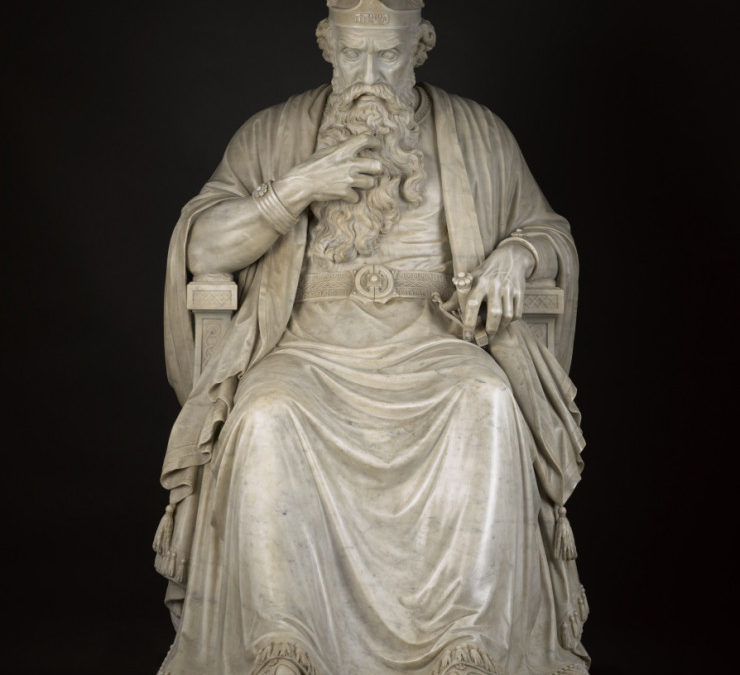
by Moe | Sep 15, 2019 | History of the Brotherhood, Latest Media
Saul, according to the Hebrew Bible, was the first king of the combined Kingdoms of Israel and Judah. His reign is traditionally placed at approximately in the 10-11 century BCE, which marked a transition from a tribal society to statehood.
It is important to point out that Saul is a descendant of the Tribe of Judah and rightful heir but that he is listed as the first king of two combined Kingdoms being that of “Israel and Judah.”
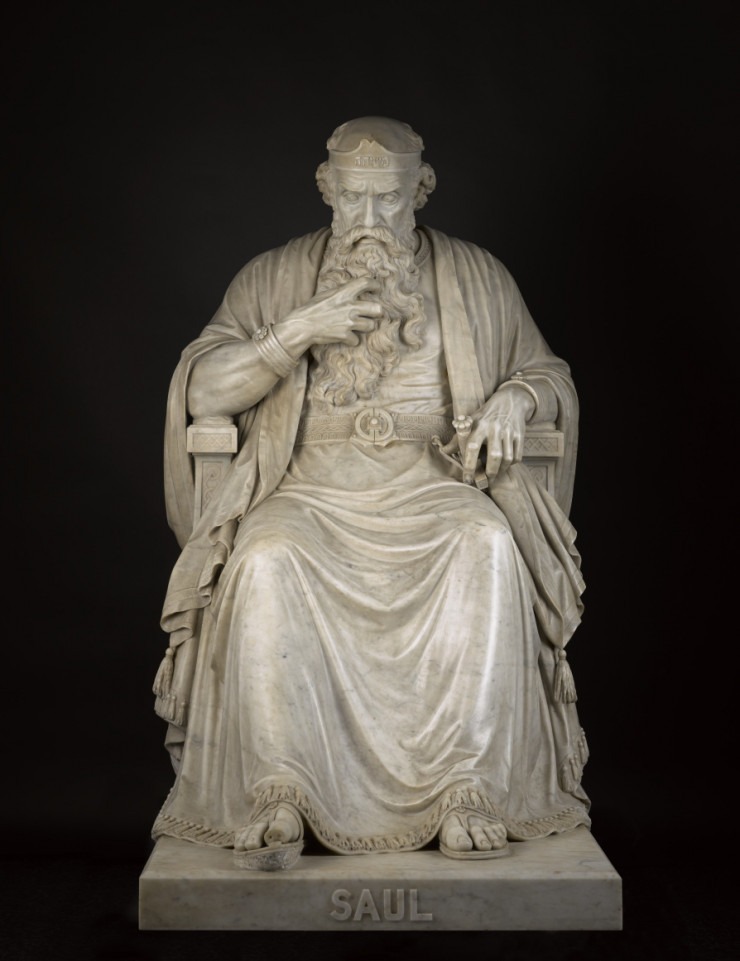
The Hebrew Bible likewise connects prophets with kings of Judah and Israel from the first (Saul) to the last (Zedekiah).
In this article, I would like to share with you my research showing that King Saul can be connected to many other names in history from around the same time like in the Bible to an important prophet named Obed or Obediah and in ancient Hebrew (Phonecian) history as King Abibalus of Bediah and Bedan and in Masonic lore has Hiram Abiff.
Most scholars and researchers might easily be deceived into thinking that two, three and even four or more different persons were intended to be documented by the ancient authorities when passing down this history.
However, I have found that these names have been changed from the true birthname to a given surname or royal title and to add to the confusion, a biblical name and or narrative that comes down to us by the Church Doctors who were charged with doctoring the original writings in order to conceal the truth from the profane ie: uninitiated.
Last but not least, we now have 2,000 plus years of different authors writing in several different languages spanning hundreds of years to the point we are at today where making sense of the Babylonian chaos seems like an impossible task.
However, as I have proved in previous articles such as King Hiram’s Son: Ithobaal, Abibalus: King Hiram’s Father is the Widow’s Son and The Widow’s Son, it will be observed that these different names (surnames, biblical names, etc.) are of the same or similar signification, and they can be connected to one another in which initiated readers who have done their true Gnostic work could make no mistake at the various connections.
IS KING SAUL’S REAL NAME KING ABIBALUS OR BIBLICALLY AS OBED OR OBEDIAH?
Before I go in-depth into this research in future articles, I would first like to point out the many striking similarities between all these people whether it be King Saul, Obed, Obediah and or King Abilalus who I believe can be proved to be all the same persona rendered “otherwise called,” accurately enough.
For example, here are some significant biblical and historical synchronicities that simply cannot be ignored;
ALL THESE KINGS HAD SONS NAMED ITHOBAAL WHO WAS MURDERED
King Saul named his fourth son Ithobaal (Ἰθόβαλος; Hebrew Ethbaal, Ishba’al, Latin – Ithóbalos, Εἰθώβαλος; Eithṓbalos – meaning with Baal).
King Hiram had a son named Ithobaal (Ἰθόβαλος; Hebrew Ethbaal, Ishba’al, Latin – Ithóbalos, Εἰθώβαλος; Eithṓbalos – meaning with Baal)
King Abibalus had a son named Ithobaal (Ἰθόβαλος; Hebrew Ethbaal, Ishba’al, Latin – Ithóbalos, Εἰθώβαλος; Eithṓbalos – meaning with Baal).
THEY WERE ALL FIRST KINGS OF VERY IMPORTANT KINGDOMS
Saul was the first king of the United Kingdoms of Israel and Judah
King Abibalus was the first king of Tyre (Byblos)
An Obediah is listed as a son of Jonathan, who is the son of Saul.
Obediah was a royal official and or prince of his family.
THEY ALL HAVE STRONG TRIBE OF JUDAH CONNECTIONS
King Saul was from the Tribe of Judah
Obediah is listed in the genealogy of the tribe of Judah and as the grandfather of David (1 Chronicles 3:21) (B.C. 470.)
An Obadiah was sent out by King Jehoshaphat of Judah to teach the law in the cities
Obadiah is a book of the Old Testament about the conquest of Jerusalem in 586 BC during the reign of King Zedekiah, the last King of Judah.
The last verses of the book of Obadiah reveal that Judah will be saved and the kingdom shall be the Lord’s.
King Abibalus’ (Hiram Abiff – Father Hiram) coffin has lions decorating the exterior indicating his possible tribal affiliation to Judah.
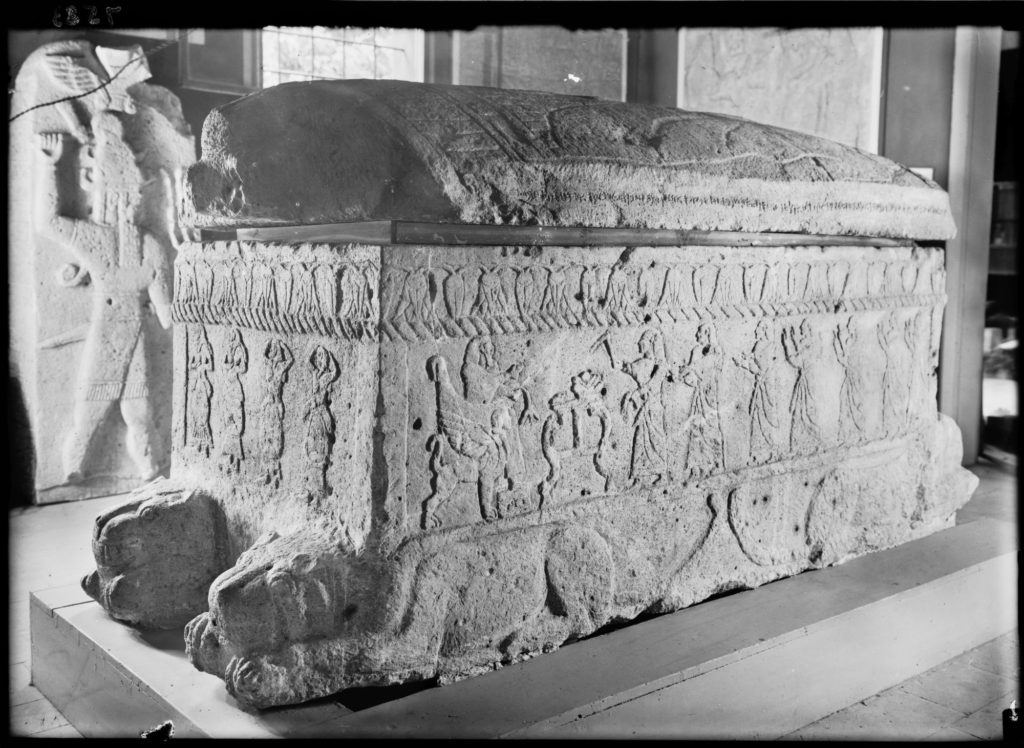
THEY WERE IN CHARGE OF OR GOVERNORS OF PALACE/TEMPLES AND RELIGION FOR THE KING
Hiram was in charge of building projects for King Solomon.
Obadiah, who was in charge of the palace. lit.(‘al-habbayith [tH5921/1004, ZH6584/1074]) An officer of high rank in the court of Ahab, who is described as “Obadiah who was over the house”(1Ki 18:3).
SERVANTS TO THE KING
King Saul sent three different groups of servants who prophesied to King David.
Now there was a servant of Saul’s household named Ziba.https://biblehub.com/hebrew/strongs_6717.htm
They summoned him to appear before David, and the king said to him, “Are you Ziba?” “At your service,” he replied. (2 Samuel 9:2 )
King David calls himself Saul’s servant three times in the bible. (l7:32, 34, 36)
King David says “I am the son of your servant Jessee of Bethlehem.”
Hiram was a servant to King Solomon whom he gave supplies and Masons.
Obed means servant and Obediah means servant of God.
TYRE CONNECTIONS
At the end of the reign of King Saul, King Abibaal had arisen in Tyre.
His son Hiram came to rule at the time when King David was engaged in bringing the whole of Israel into subjection.
During the reigns of David and Solomon, Israel had a warm relationship with the people of Tyre (1 Kings 5: Iff.).
ALL OF THEM REIGNED OR LIVED IN OR AROUND THE 10TH CENTURY BC
King Saul reigned approximately in the 10th century BC.
King Abibalus or Abi-Baal reigned approximately in the 10th century BC about the end of the right of King Saul and the same time that David was the king by the tribe of Judah.
40 YEARS
Like King Saul and King David, King Solomon reigned for 40 years.
PRIESTS AND PROPHETS OF BAAL
Abibalus was a priest of Baal.
Obediah was a priest of Baal and hid one hundred of the Lord’s prophets in caves and gave them supplies.
In “The Babylonians (Against the Greeks, 1.21)” Josephus said Nebuchadnezzar besieged Tyre for thirteen years in the days of Ithobaal [III], their king; after him reigned Baal [II], ten years; after him were judges appointed, who judged the people.
CONCLUSION
It is obvious that from these various synchronicities and what appear to be surnames and birth name changes that Saul who is called the first King of the United Kingdoms of Judah and Israel can also be connected to the first King of Tyre (Byblos or Giblim) whose name was Abibalus who I have tied to Hiram Abiff that then connects us to Obed or Obediah of whom both are famously known as “The Widow’s Son.”
To be continued…
Moe is the founder of GnosticWarrior.com. He is a father, husband, author, martial arts black belt, and an expert in Gnosticism, the occult, and esotericism.



























